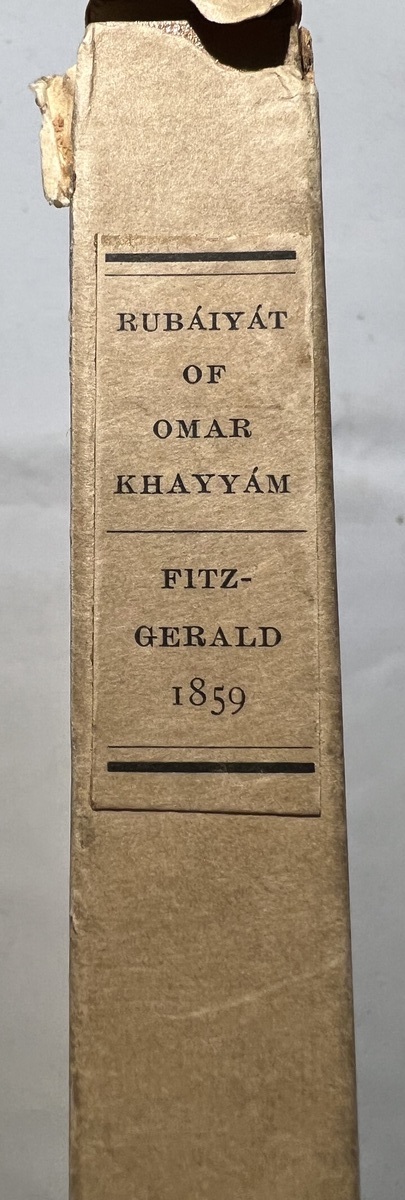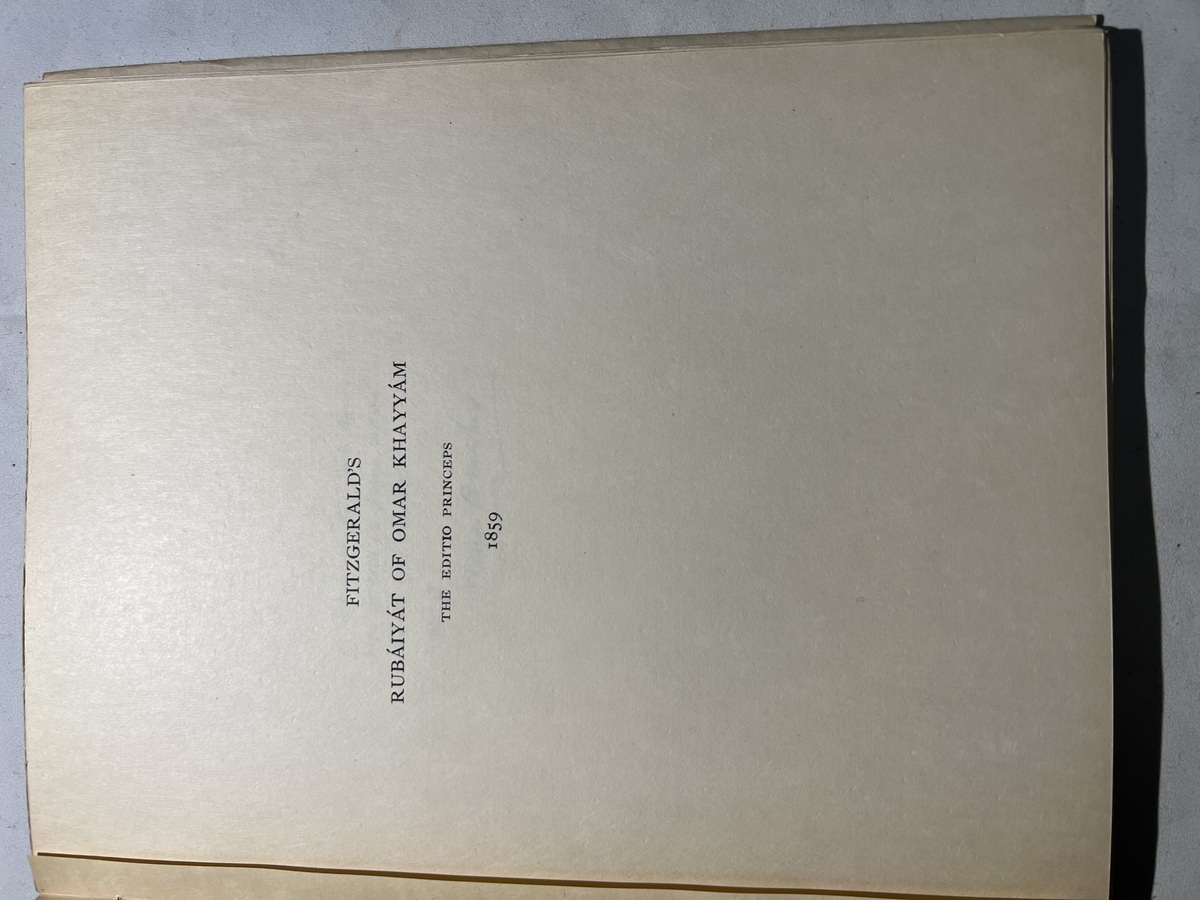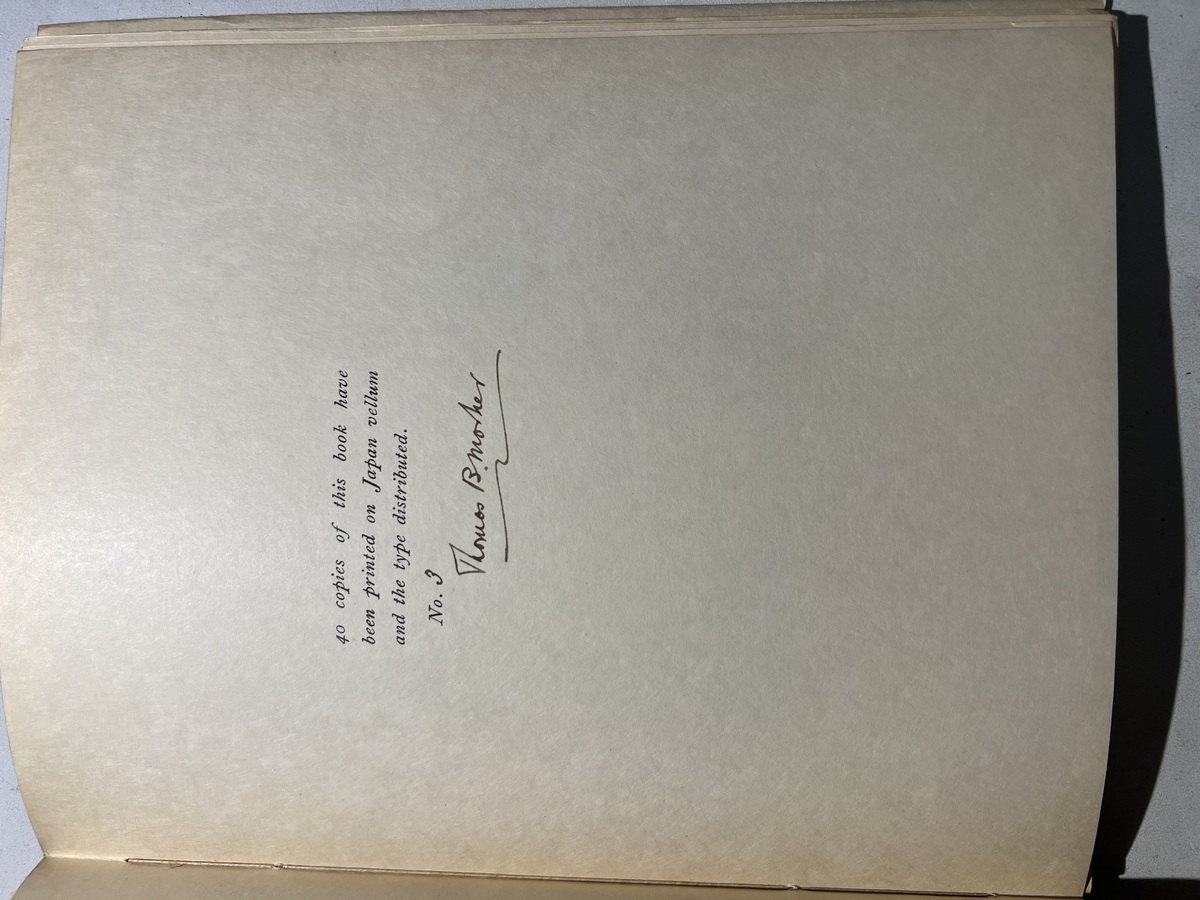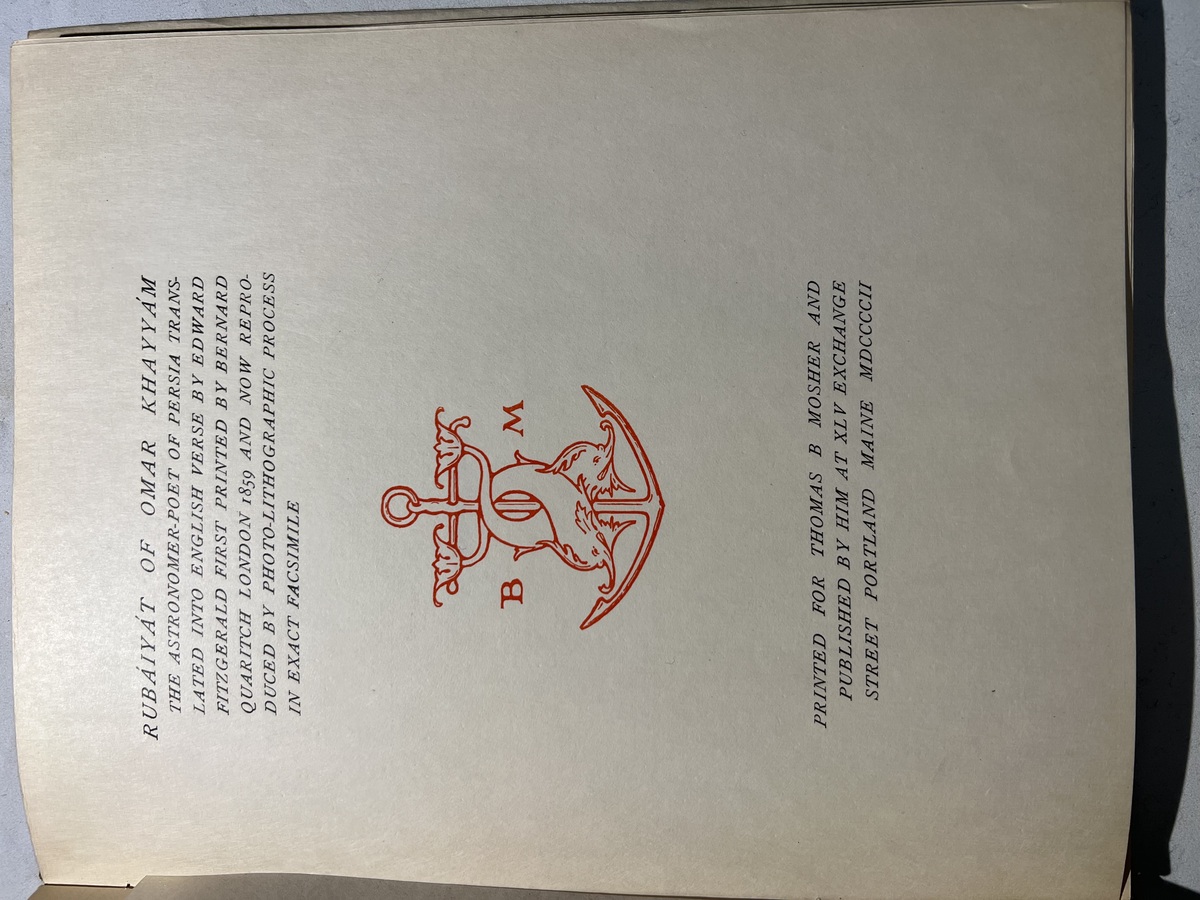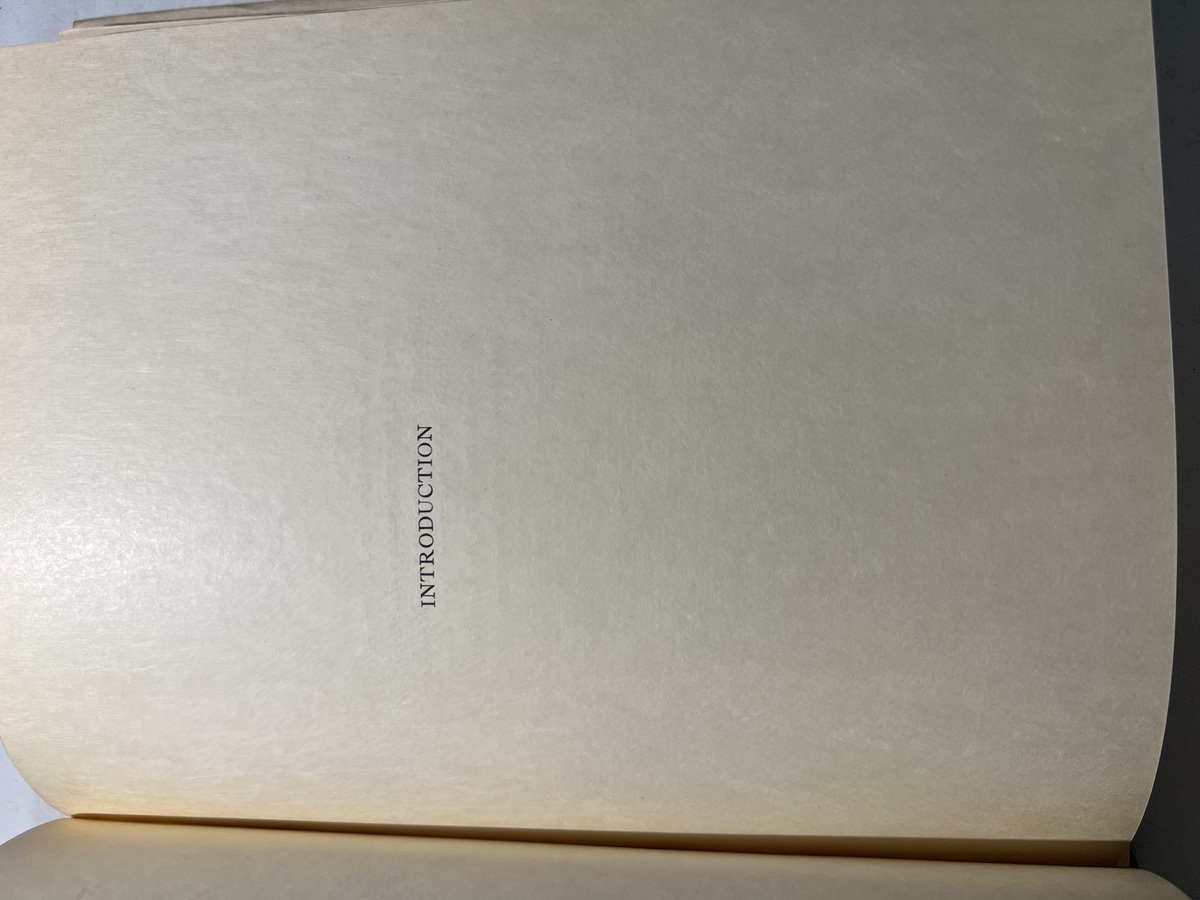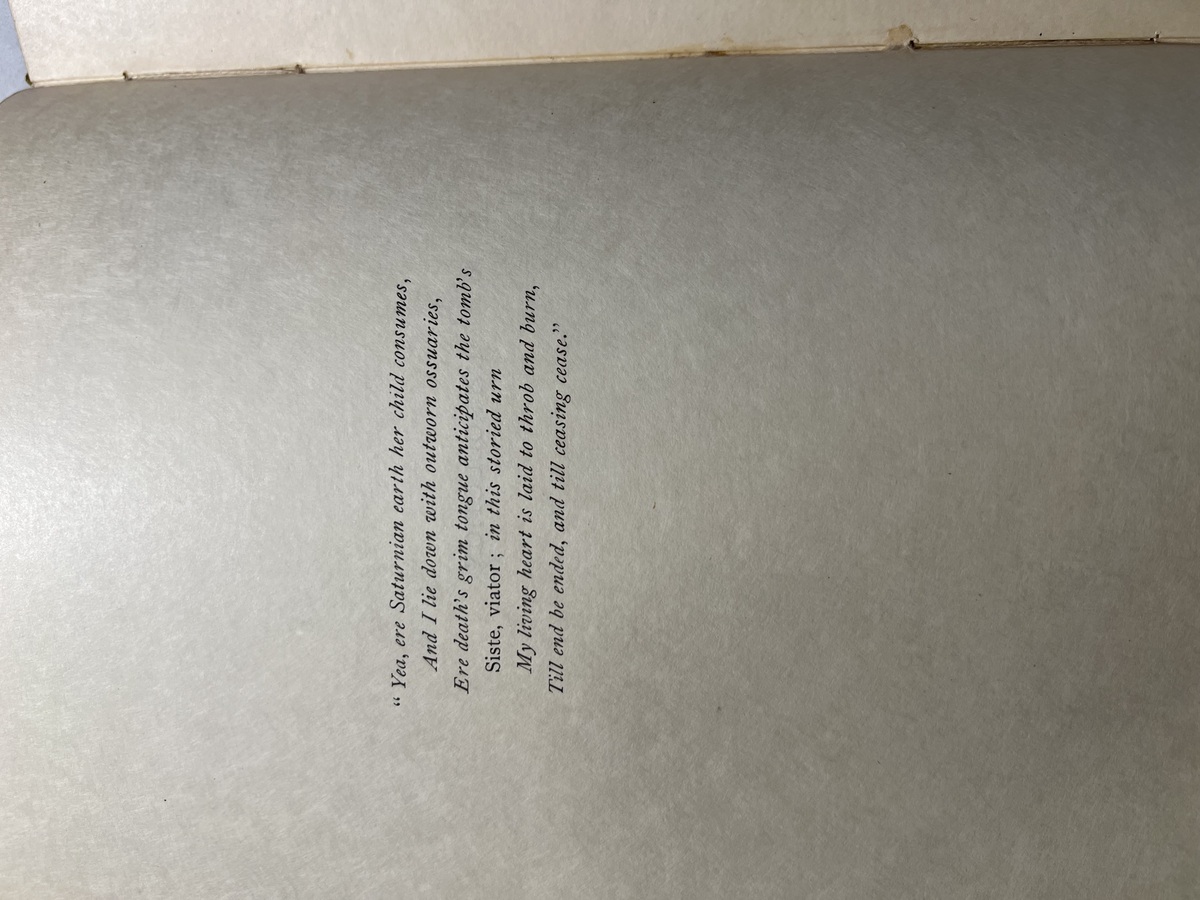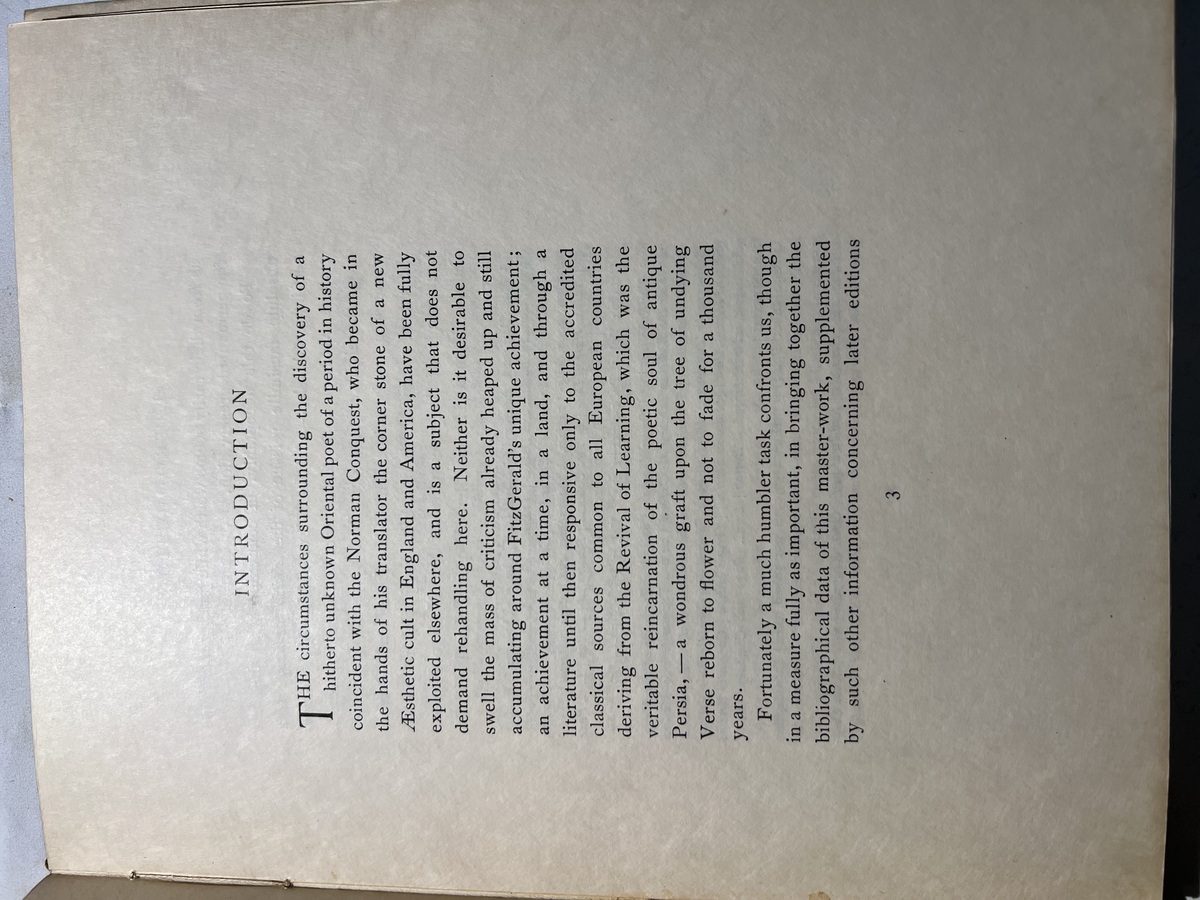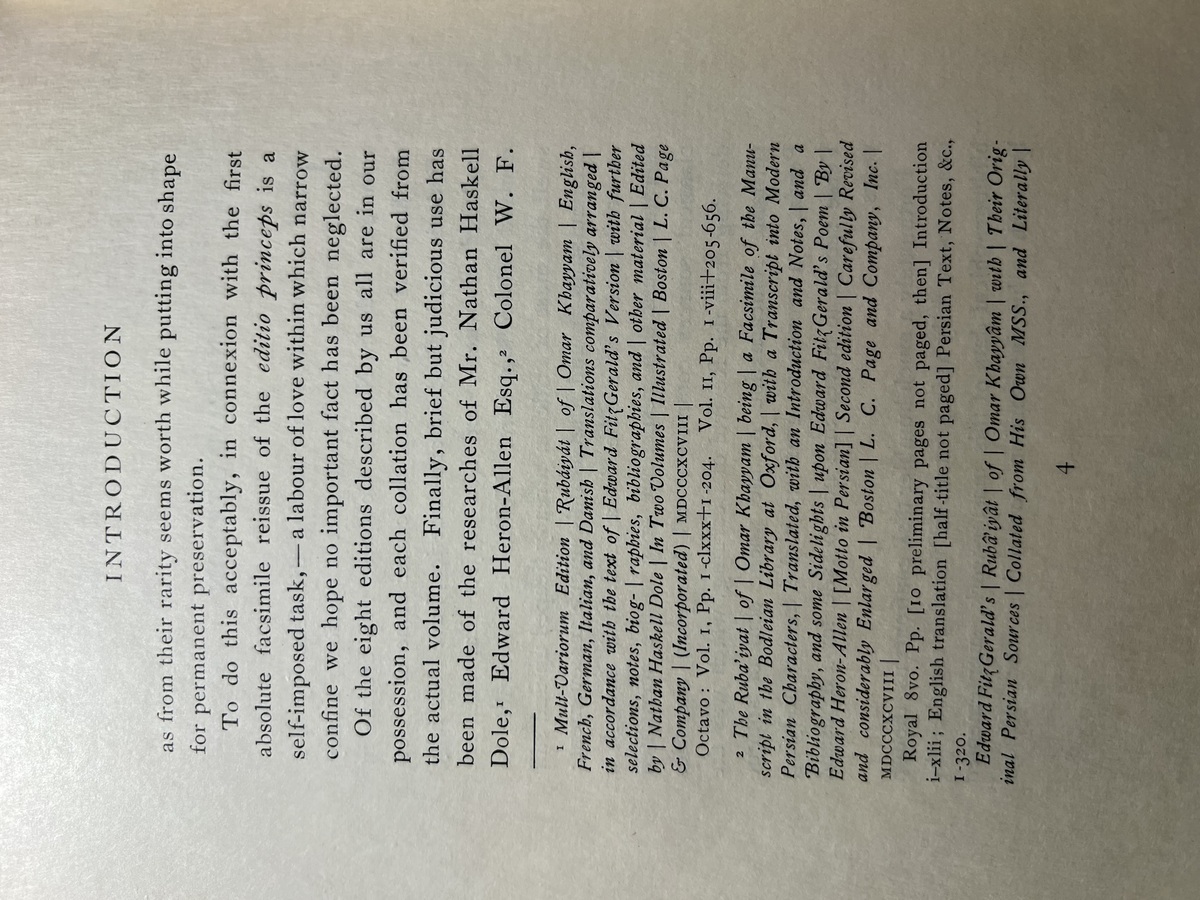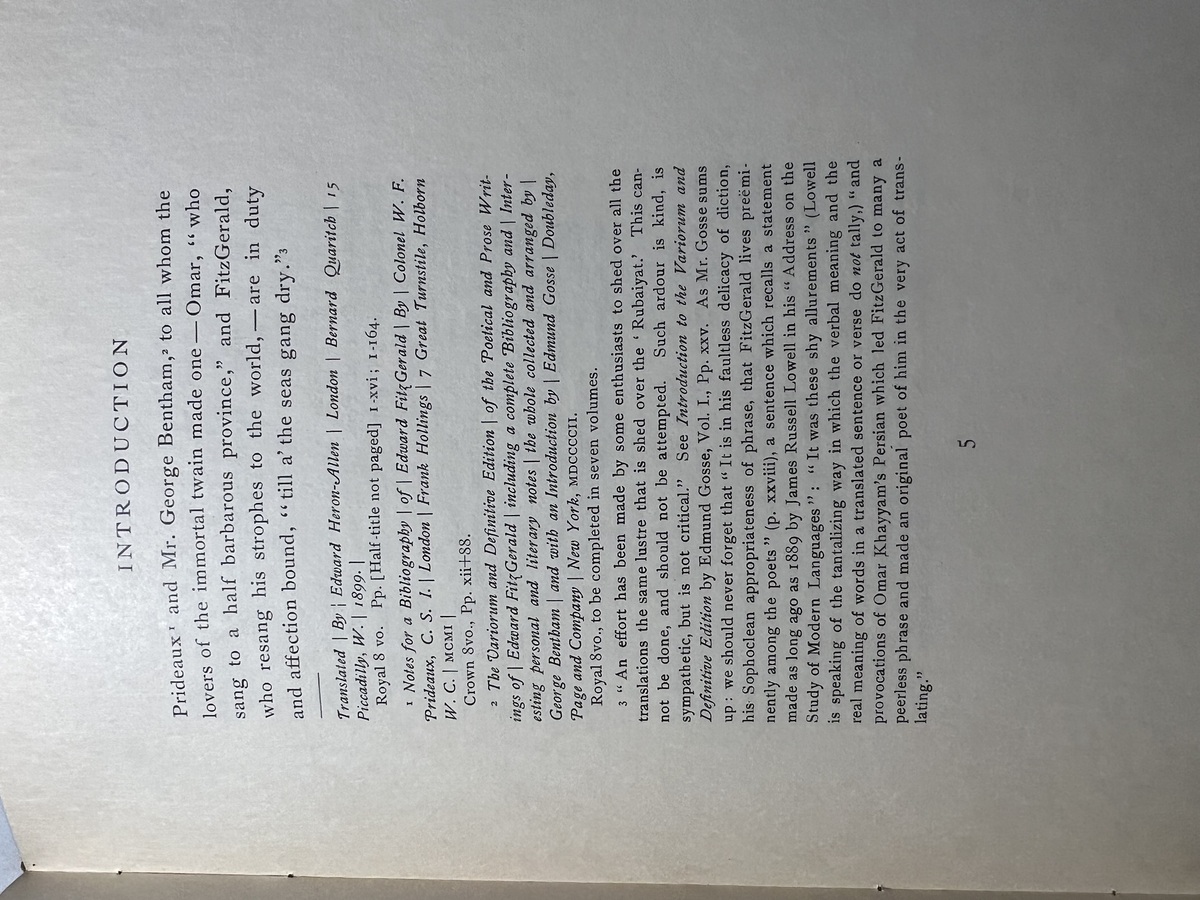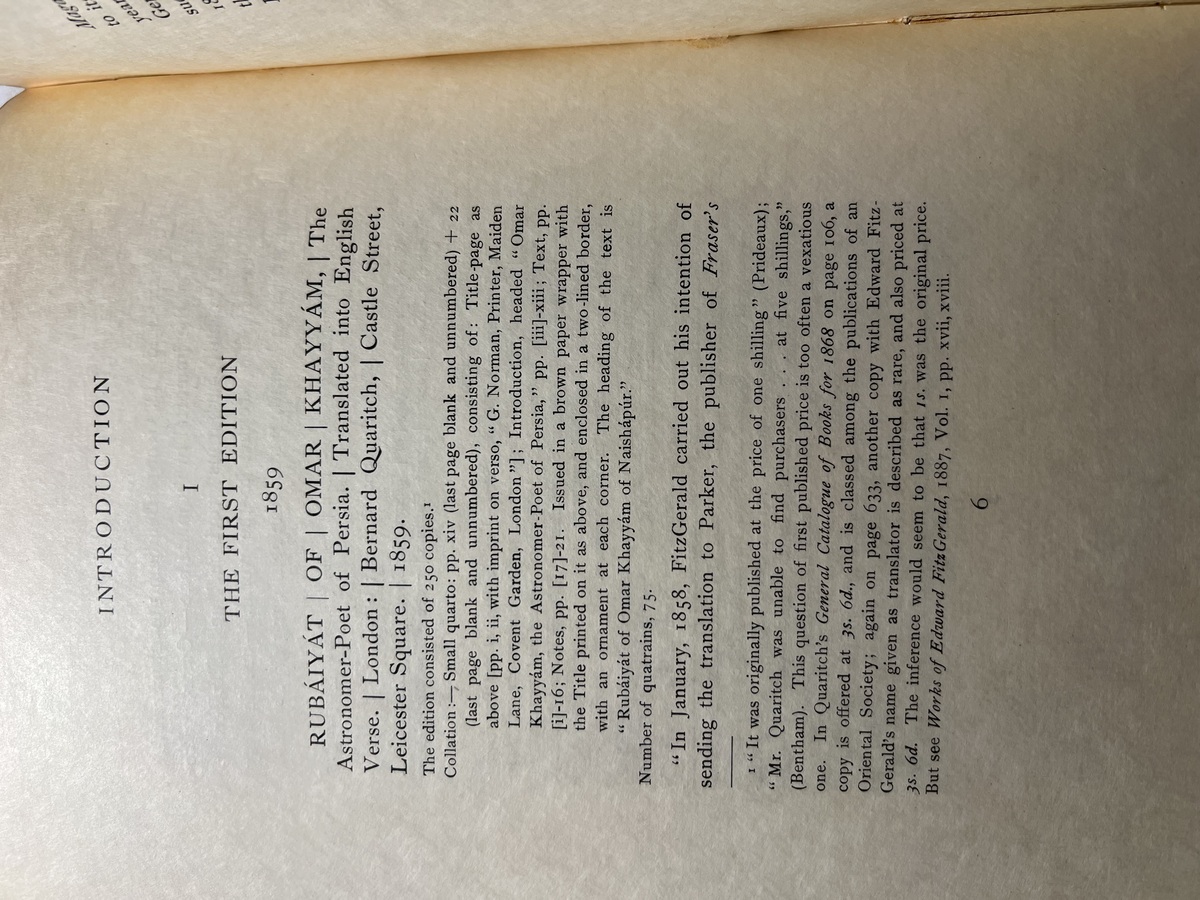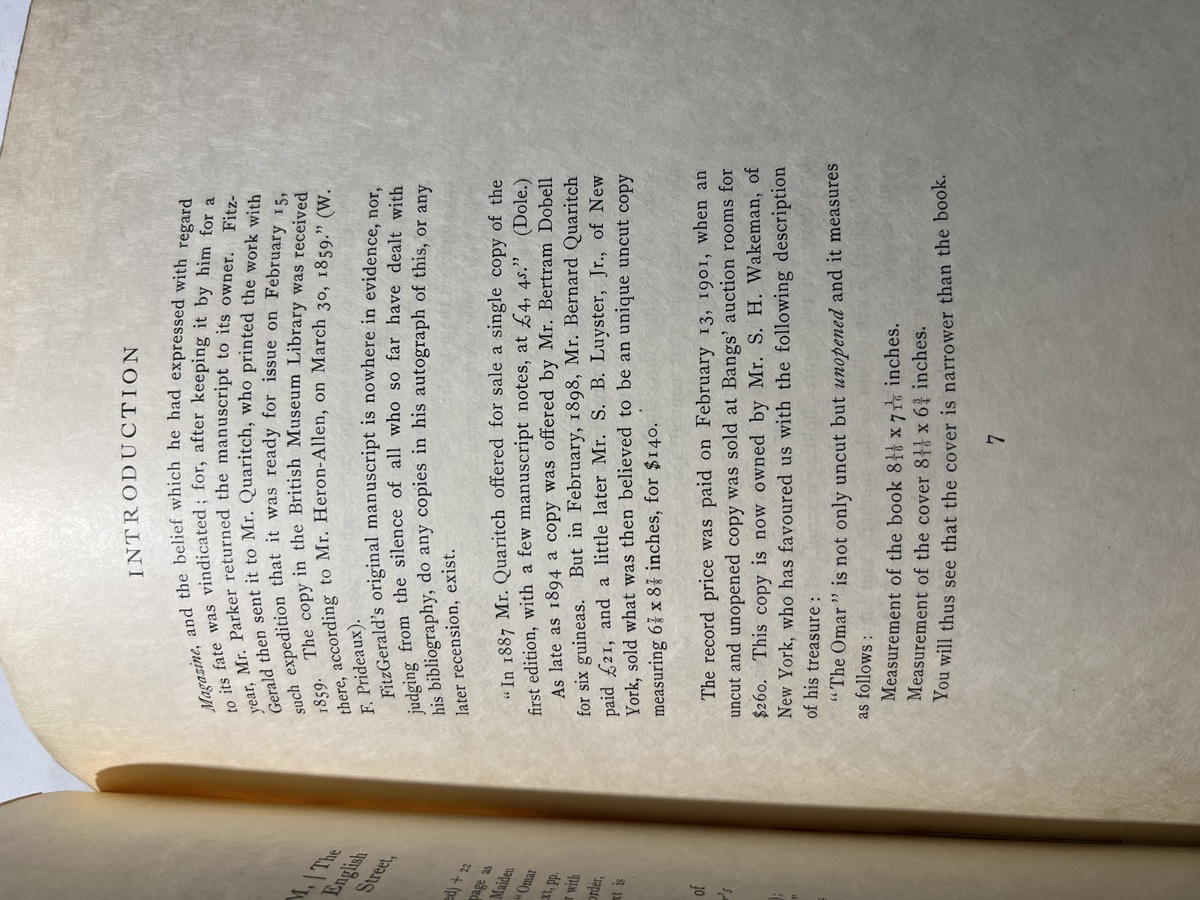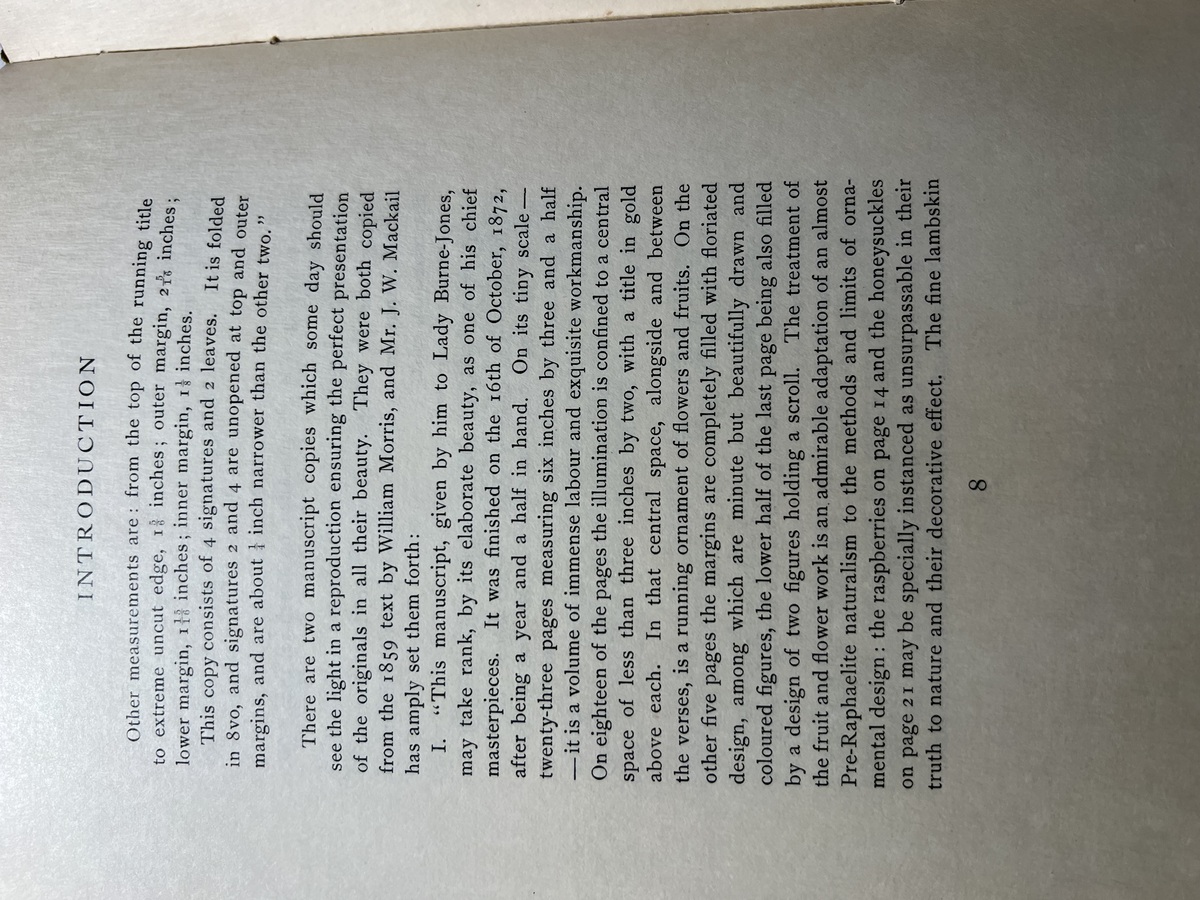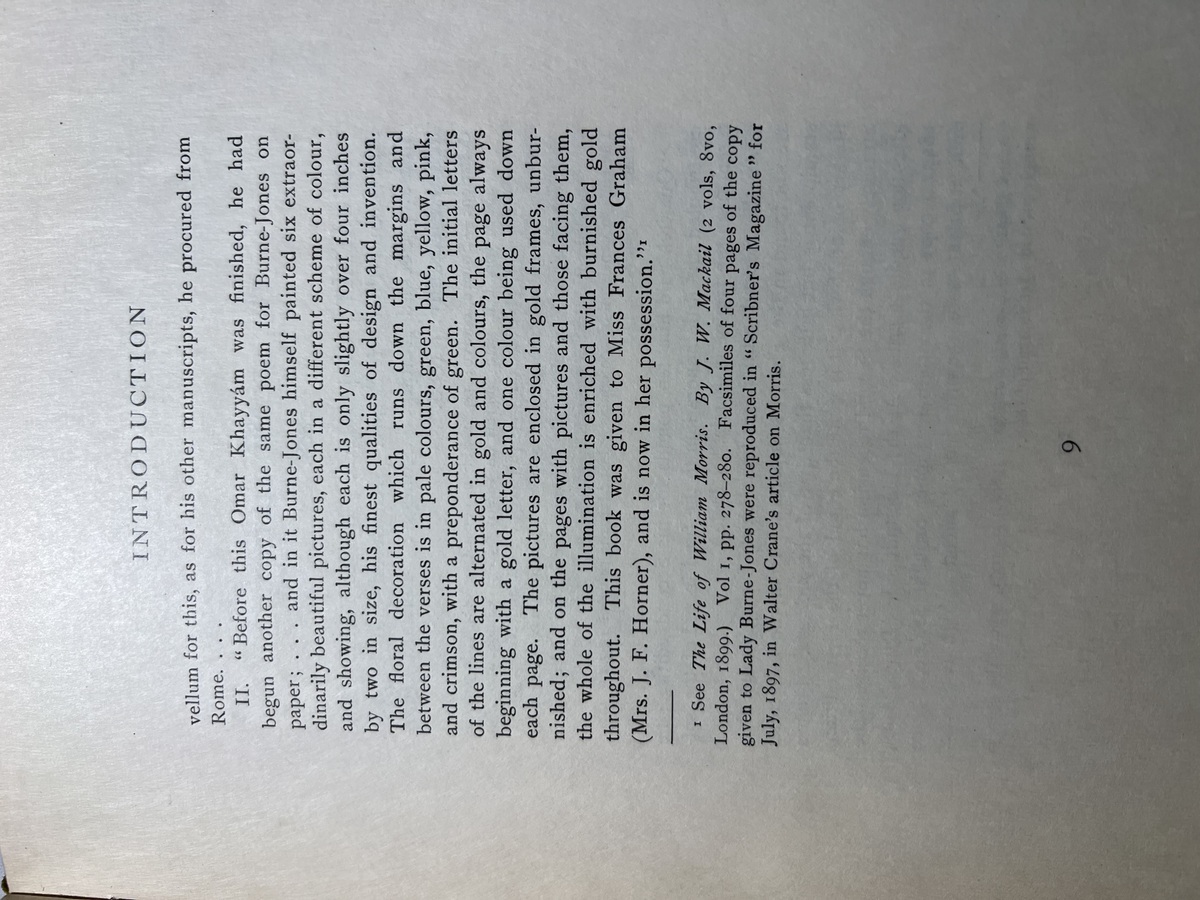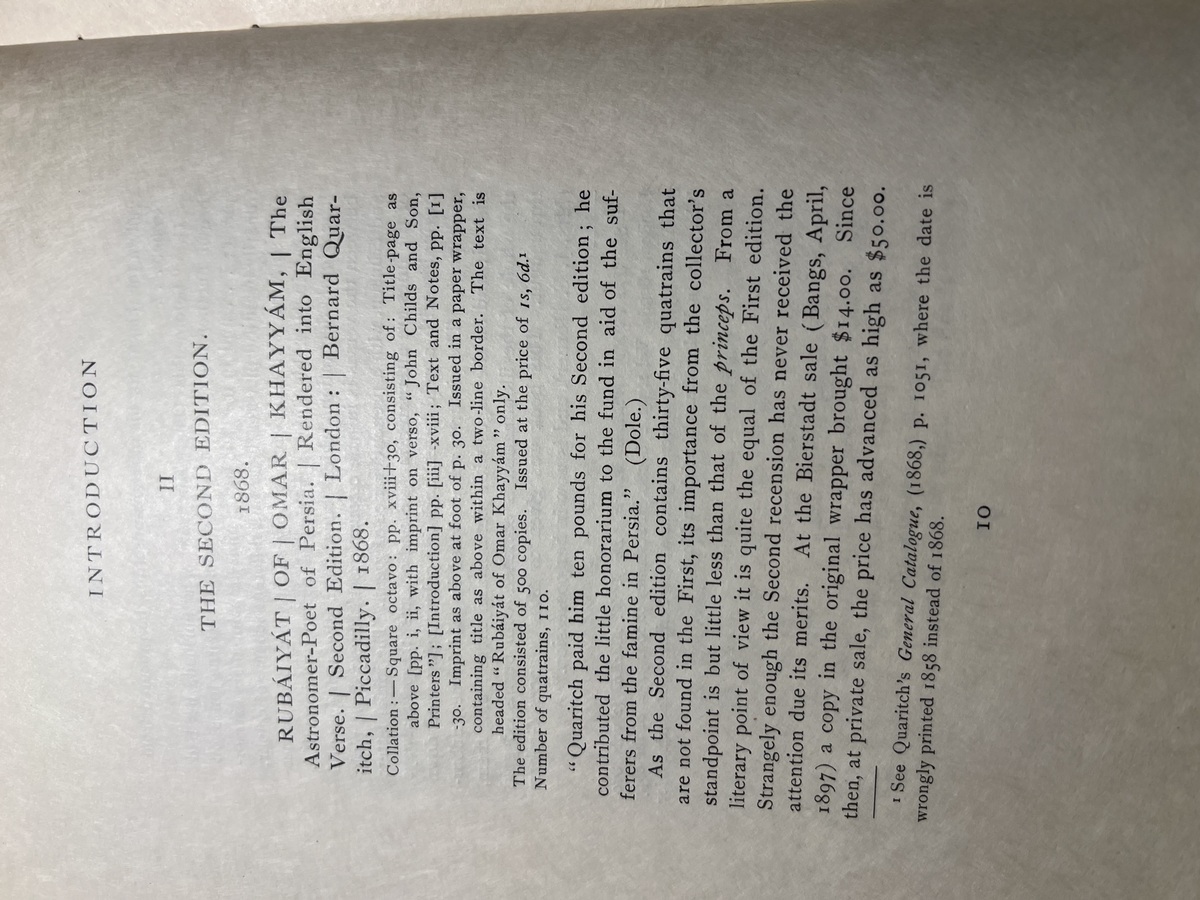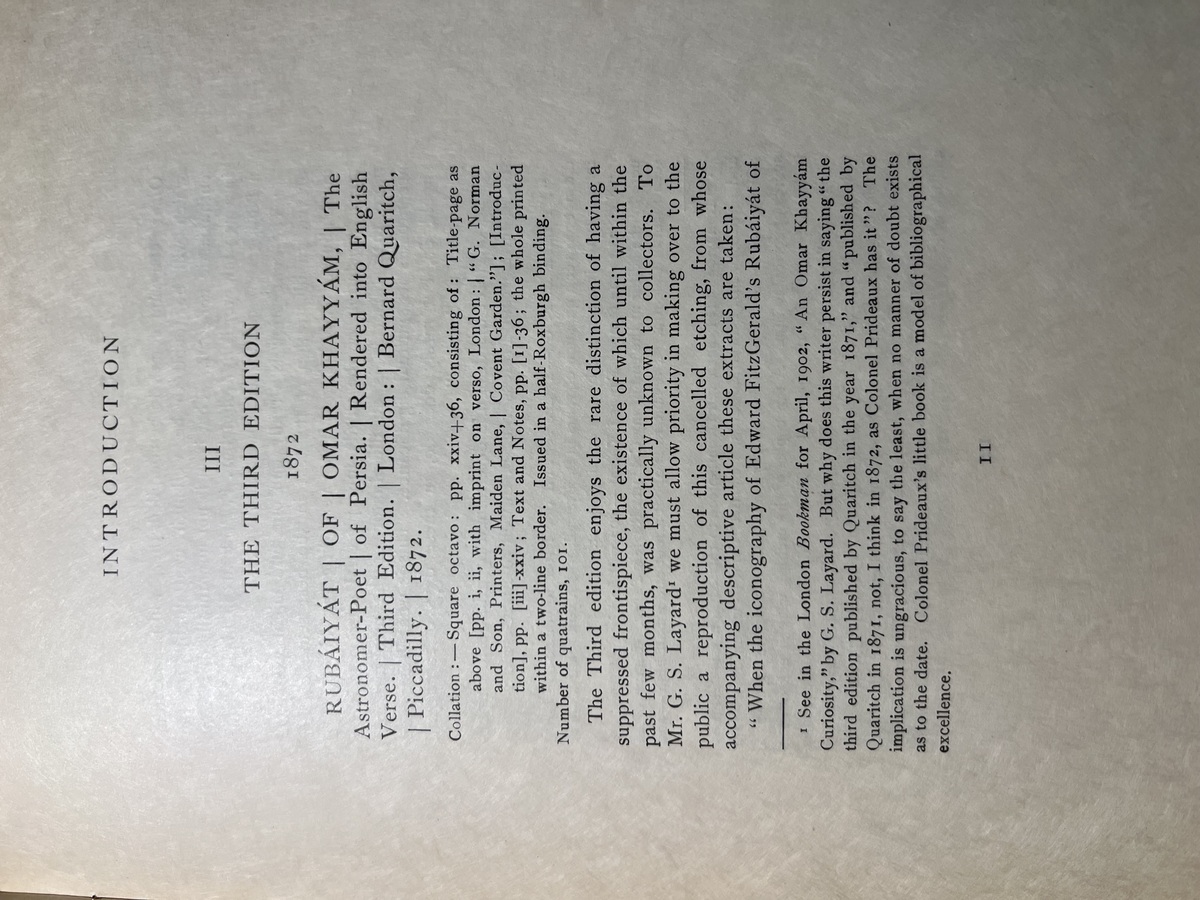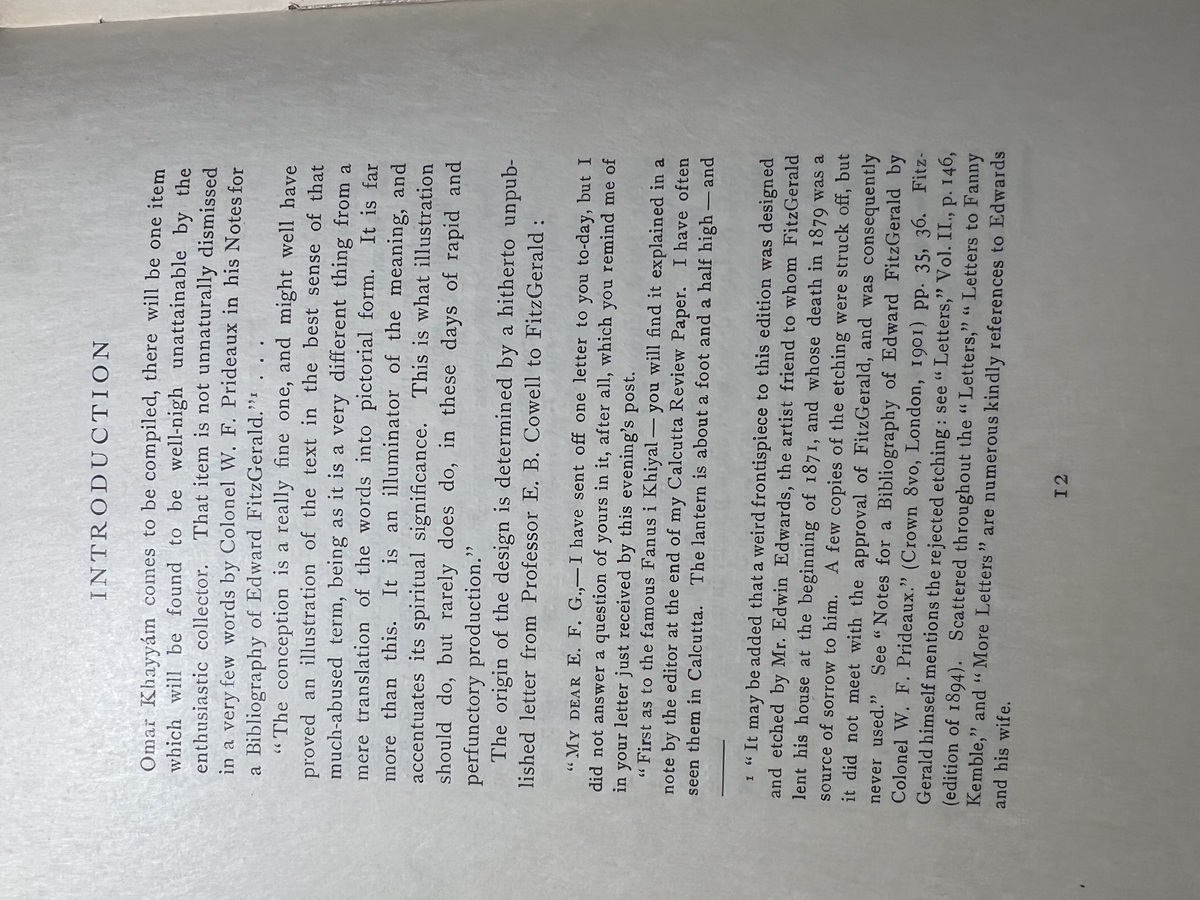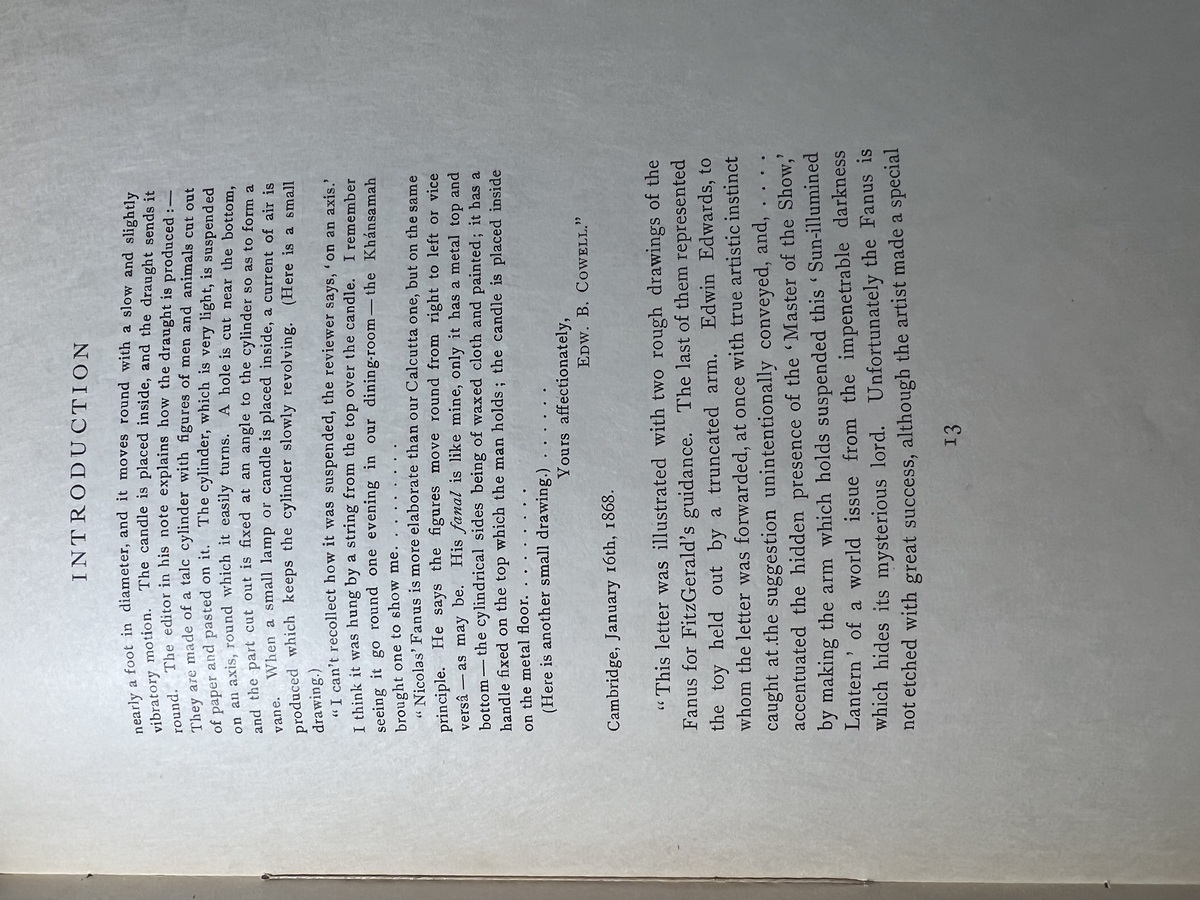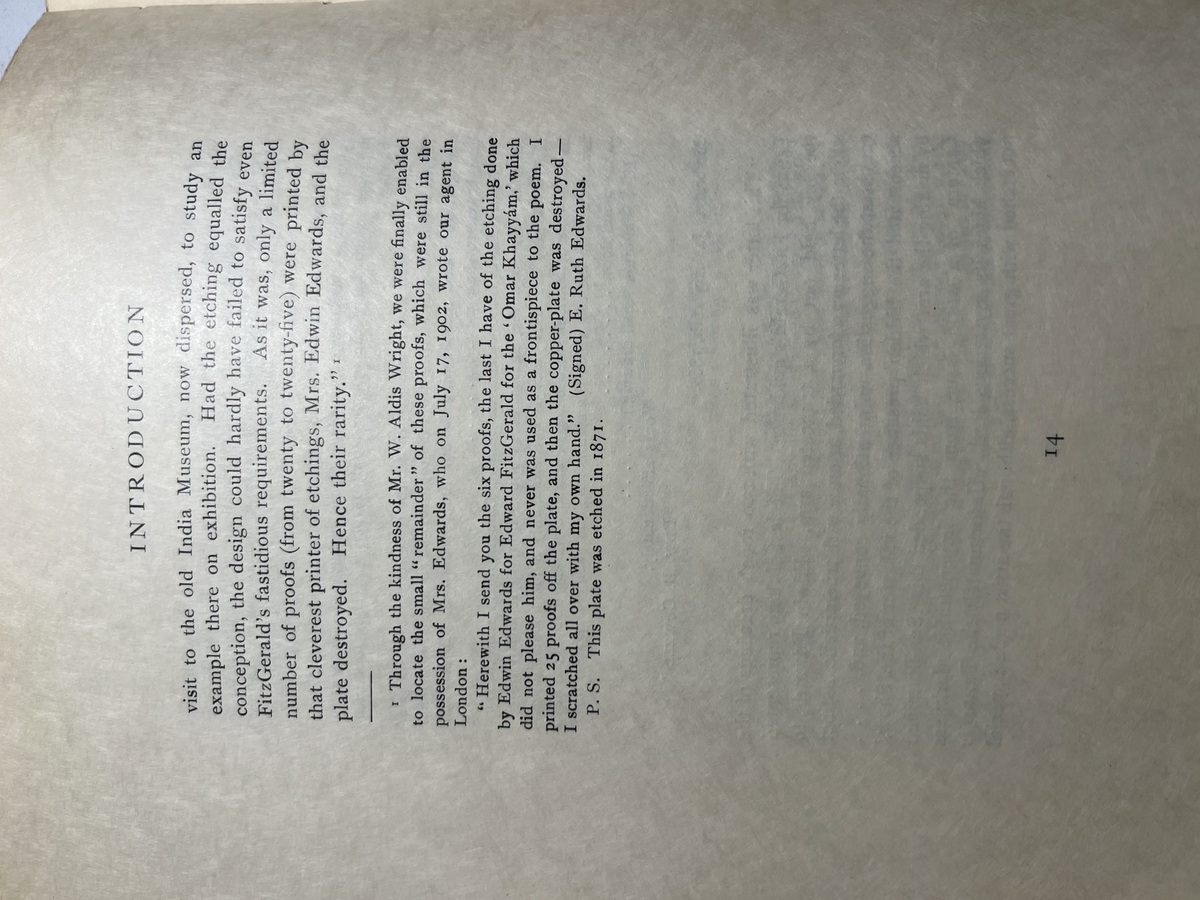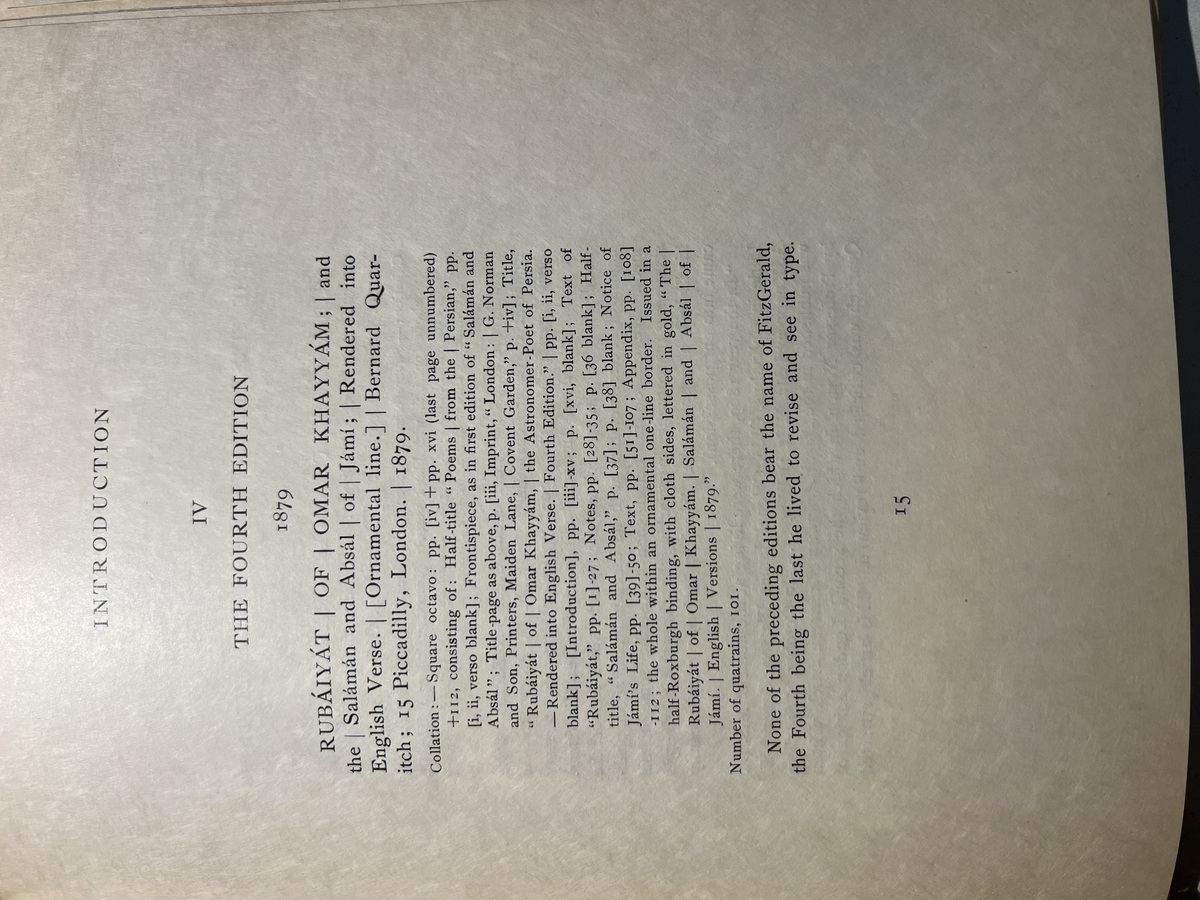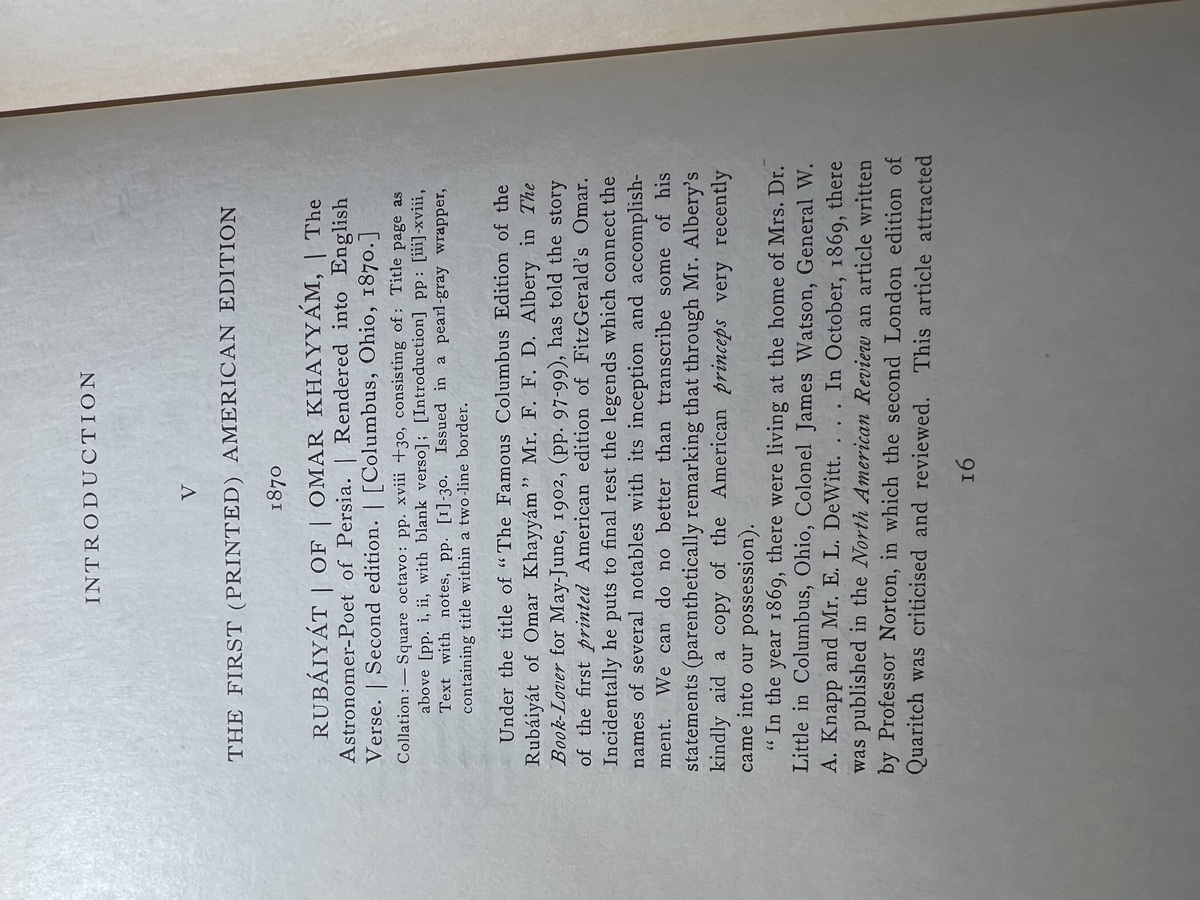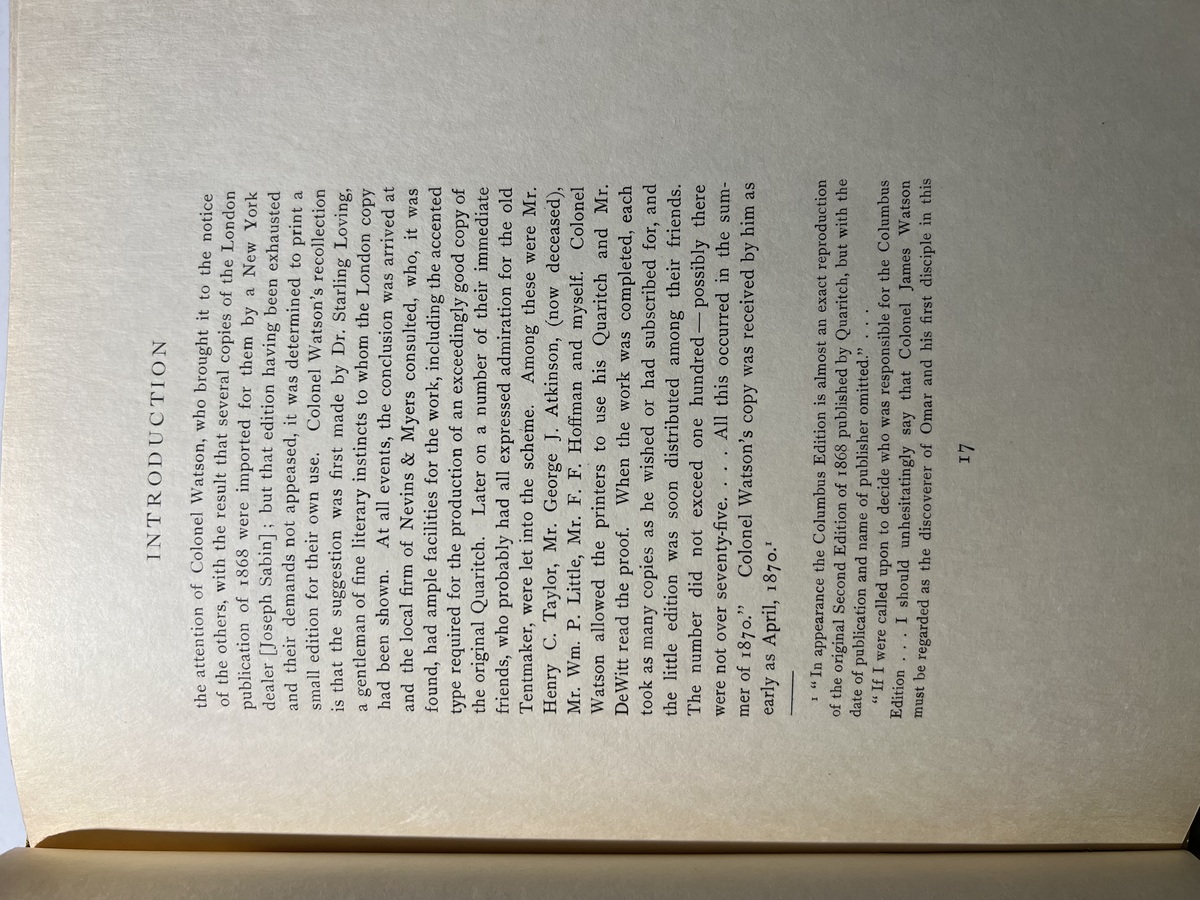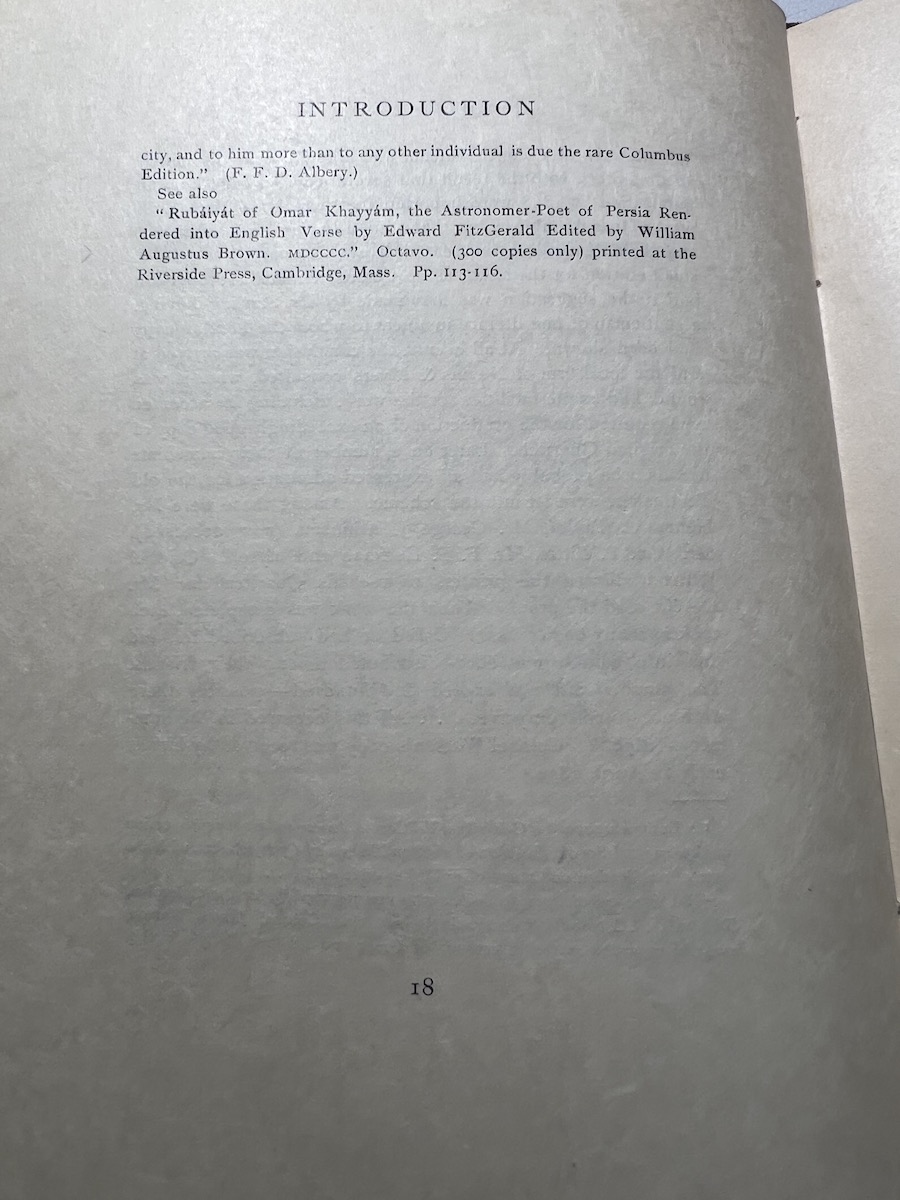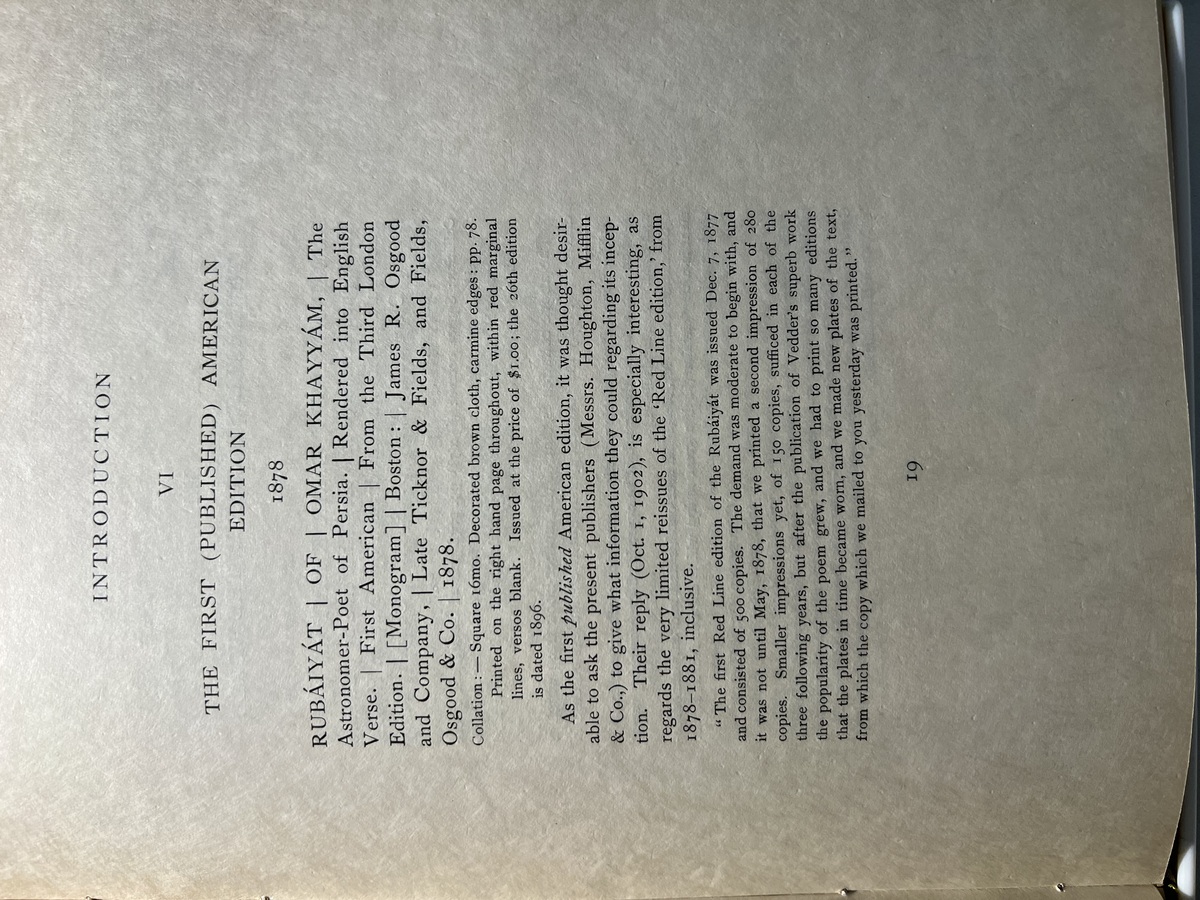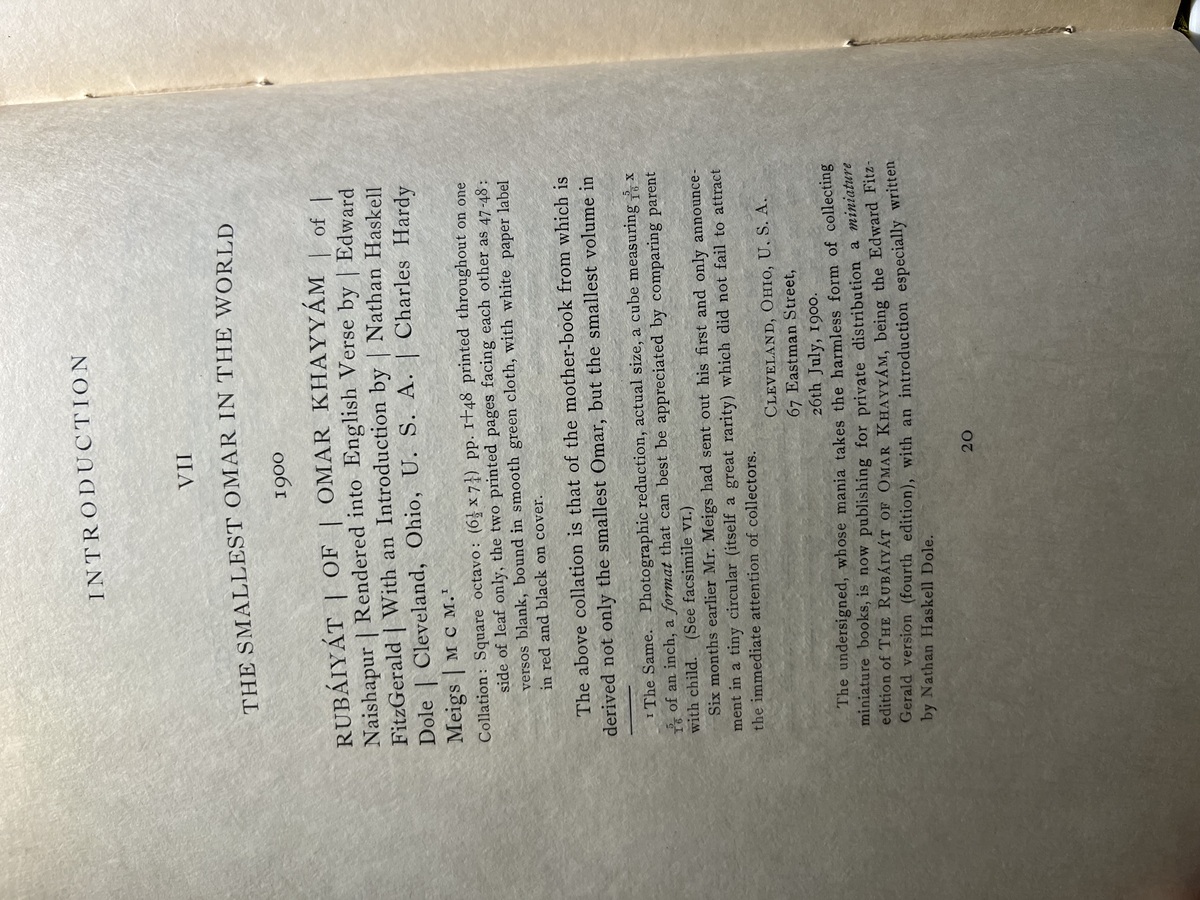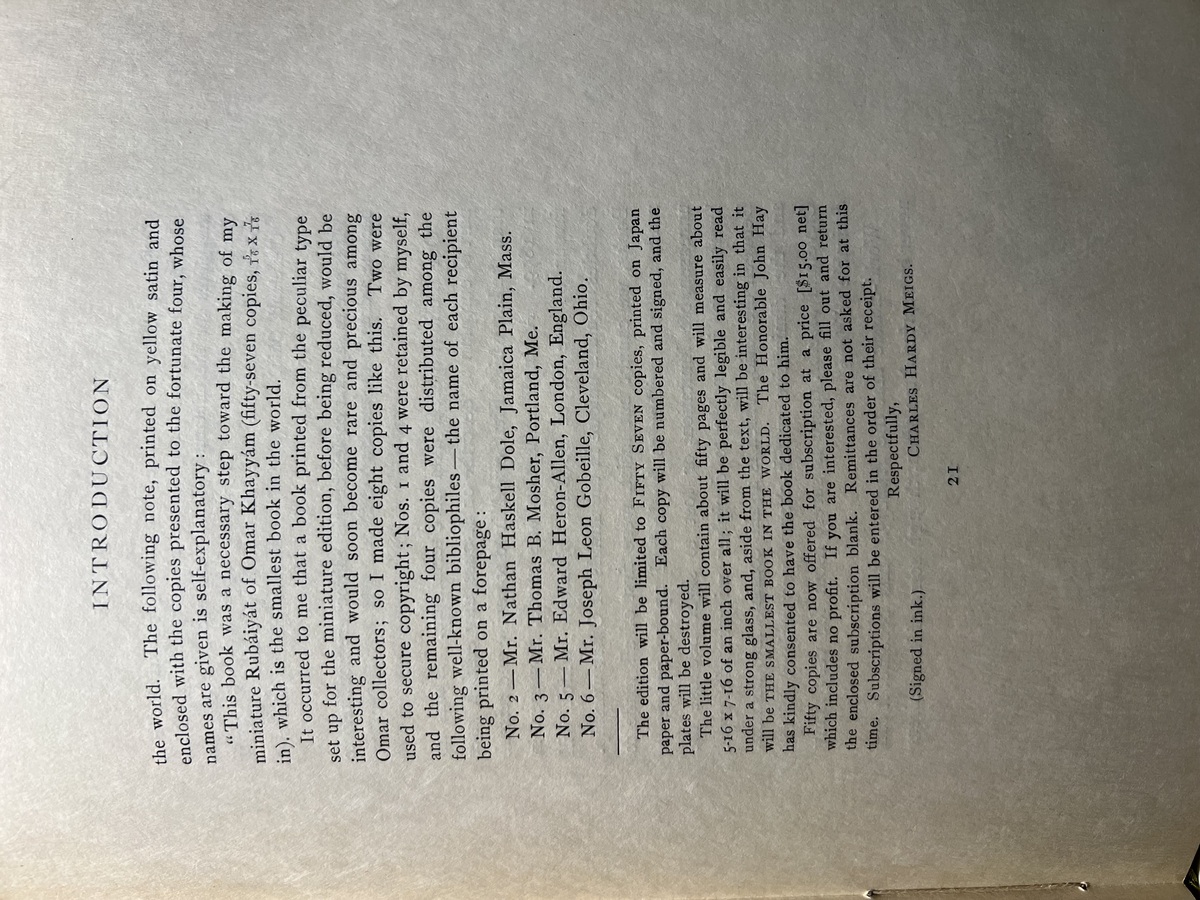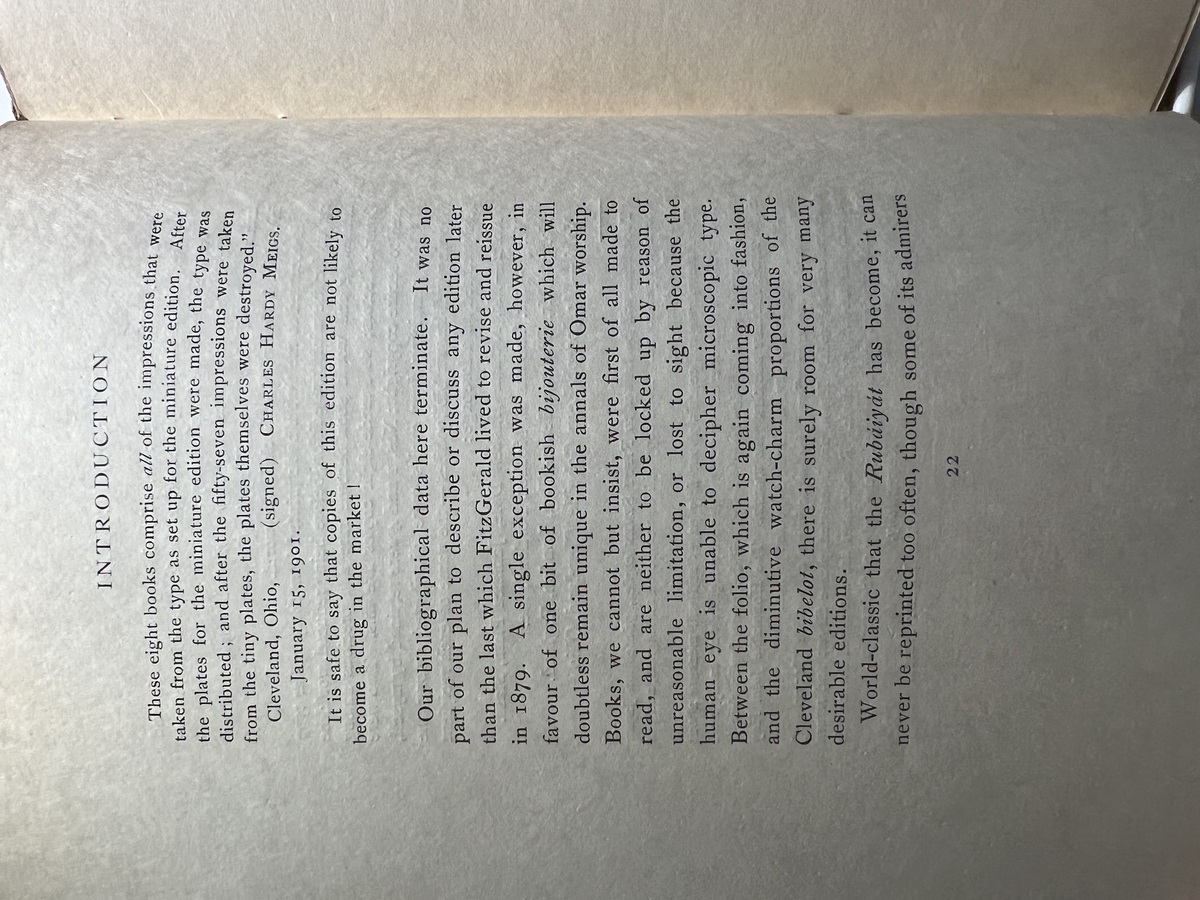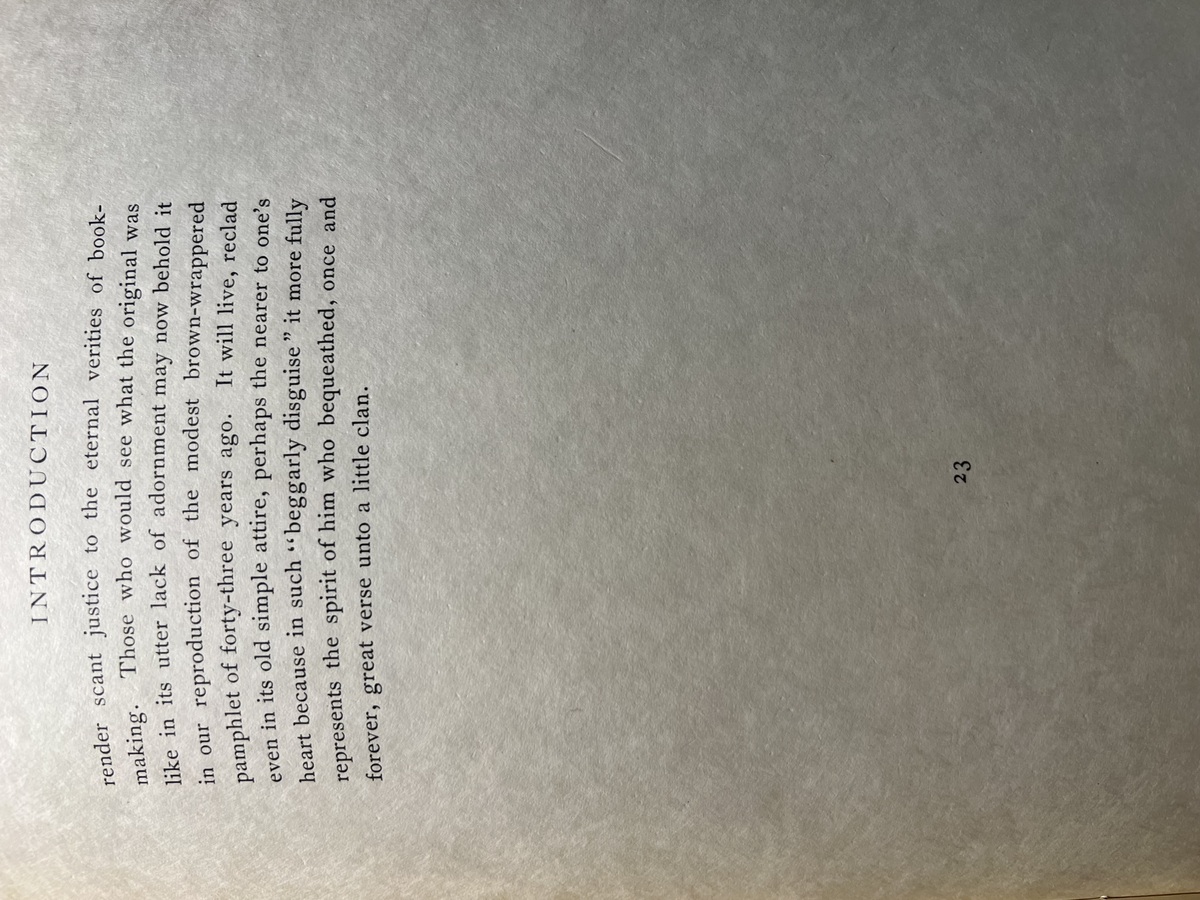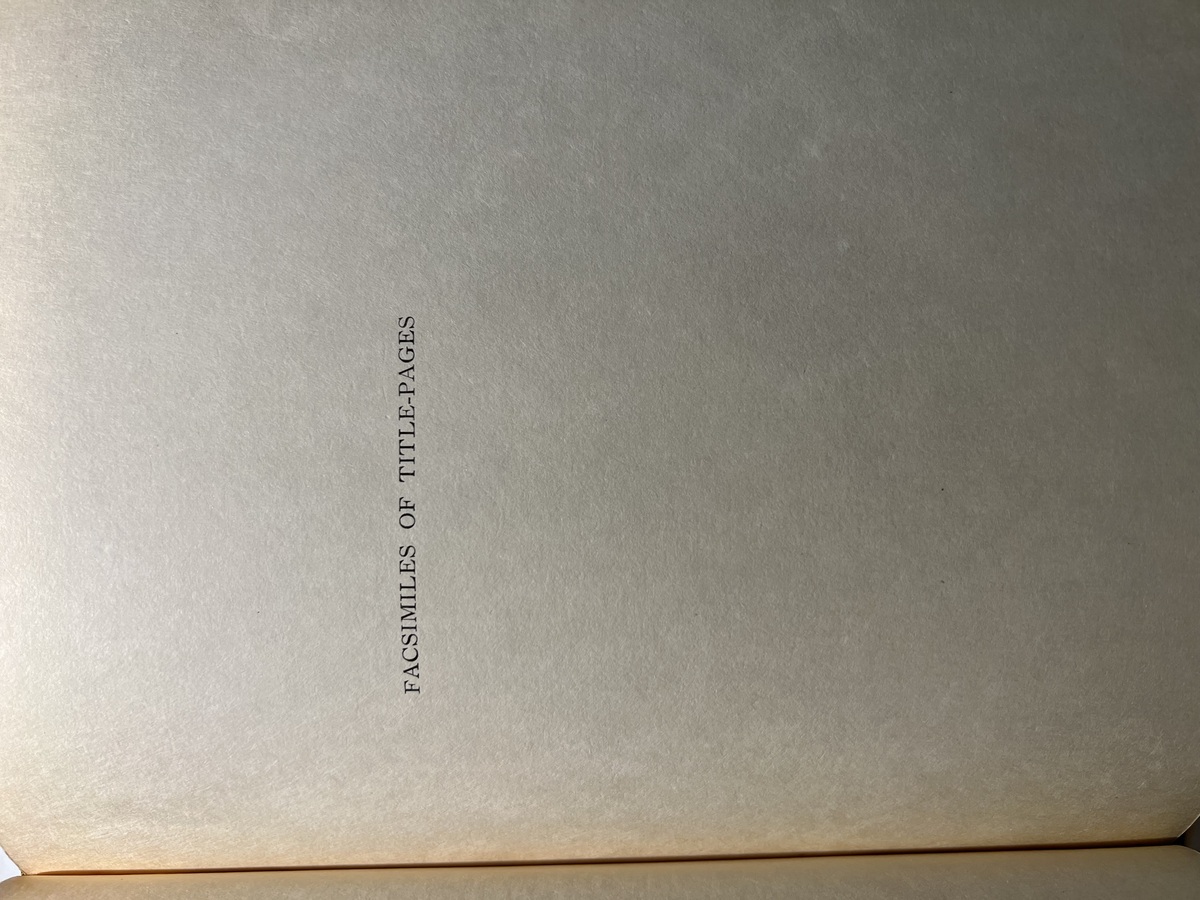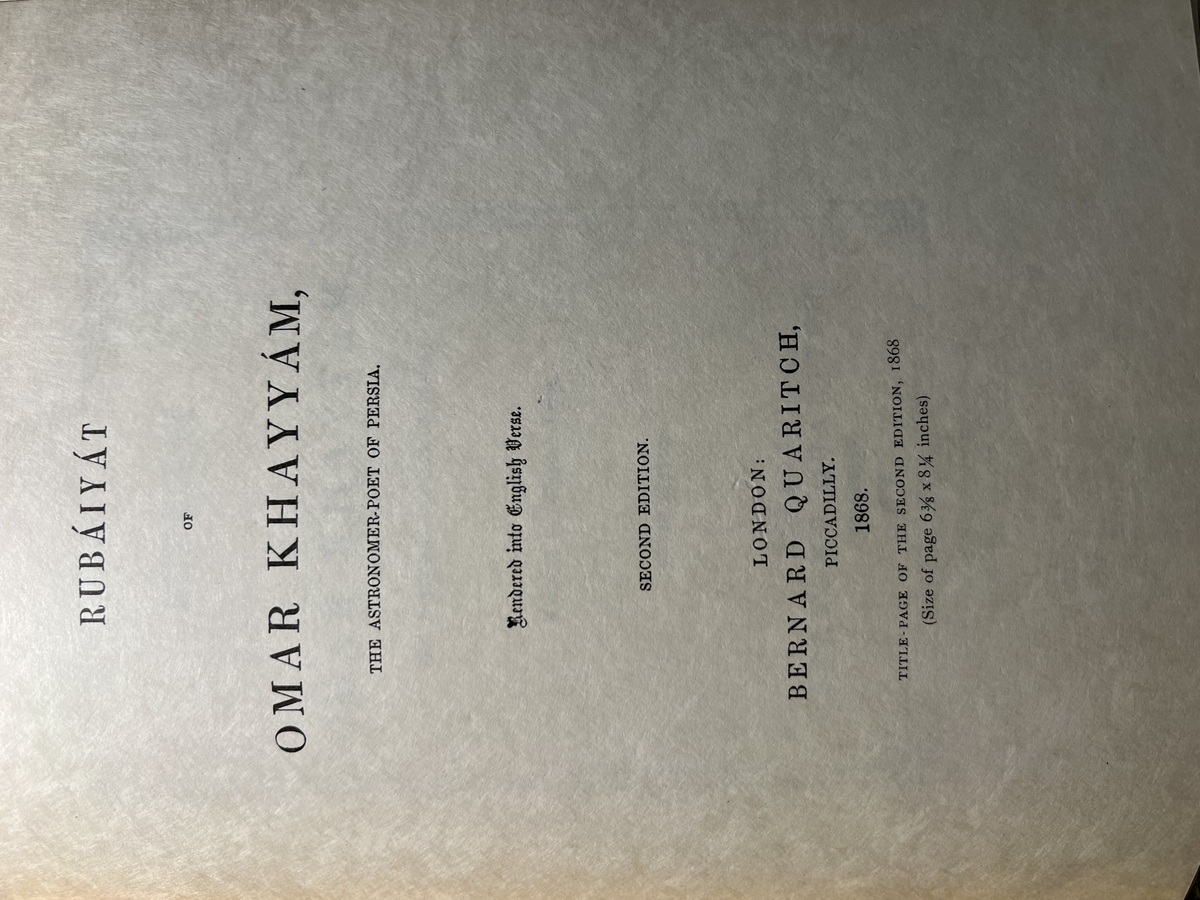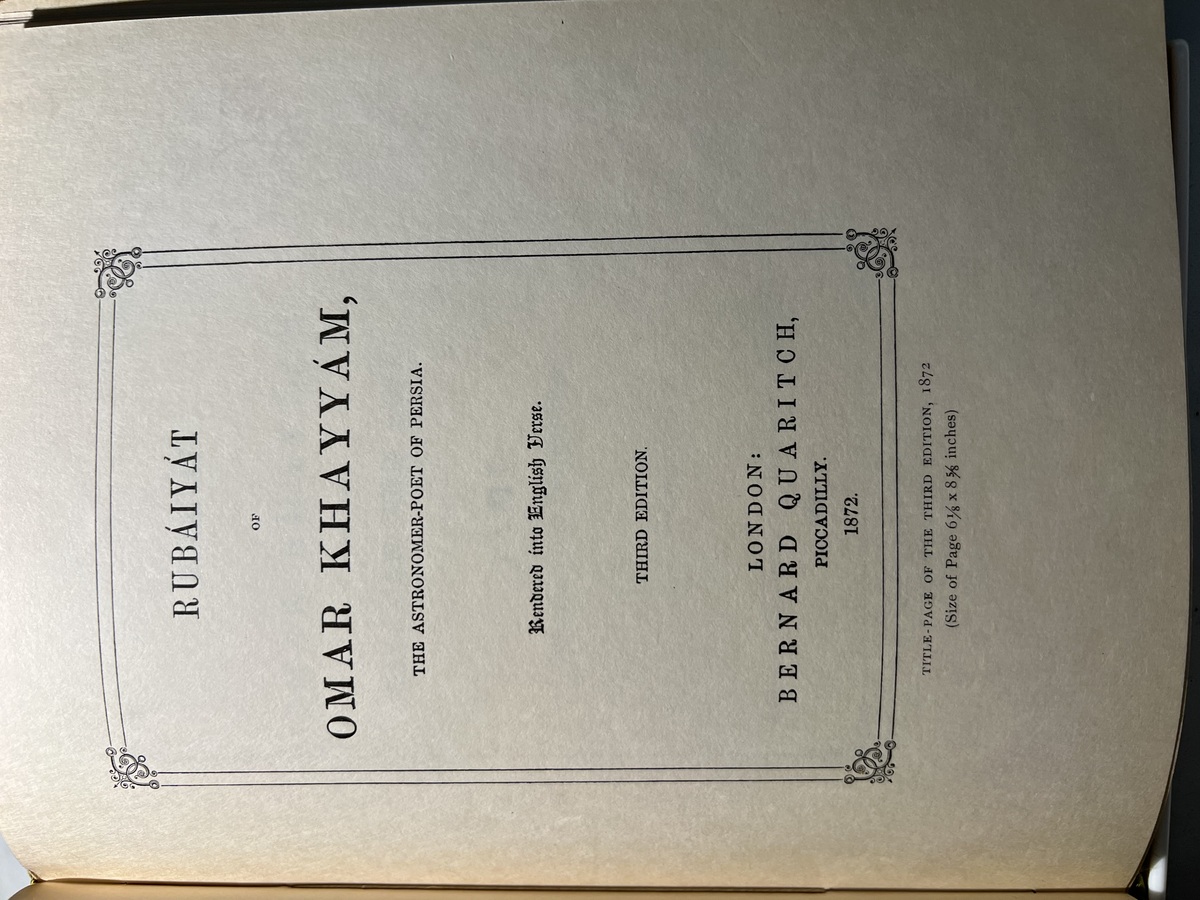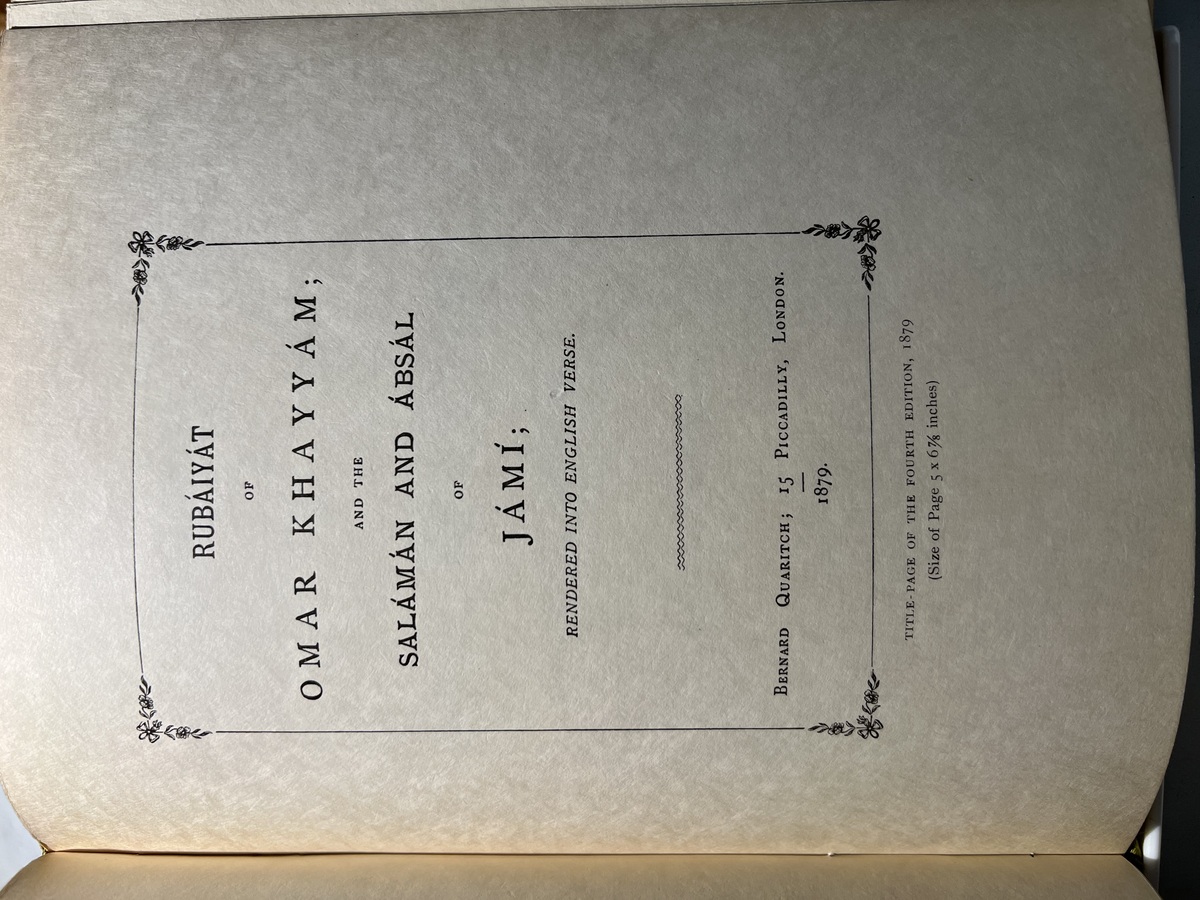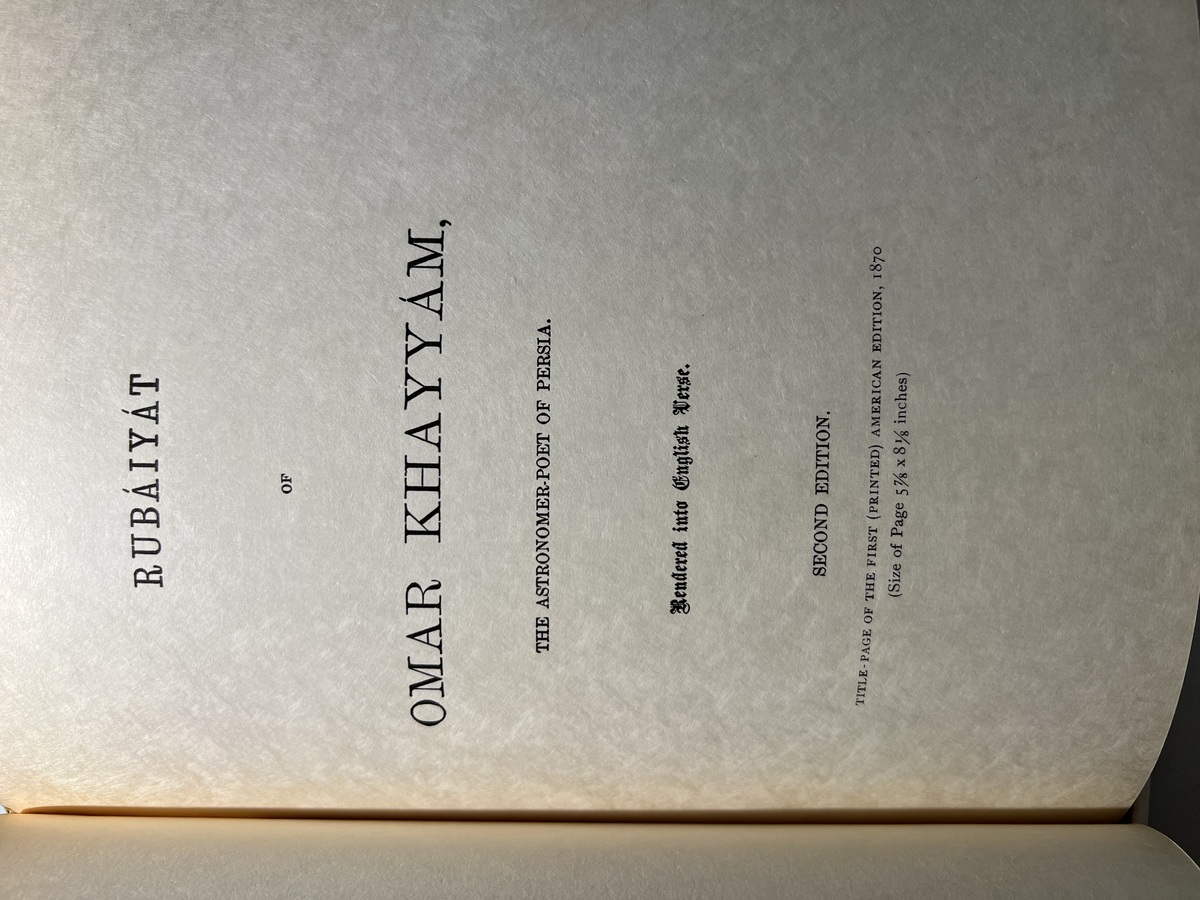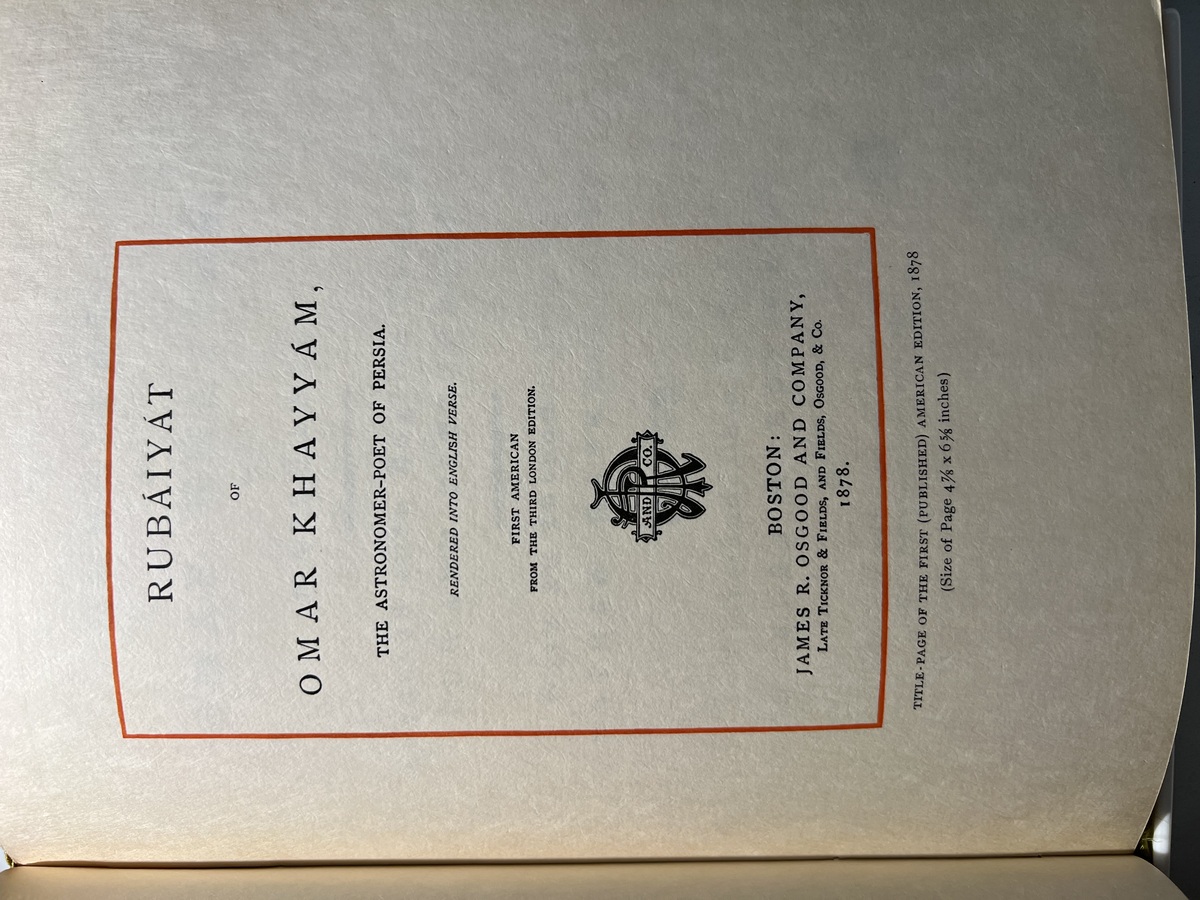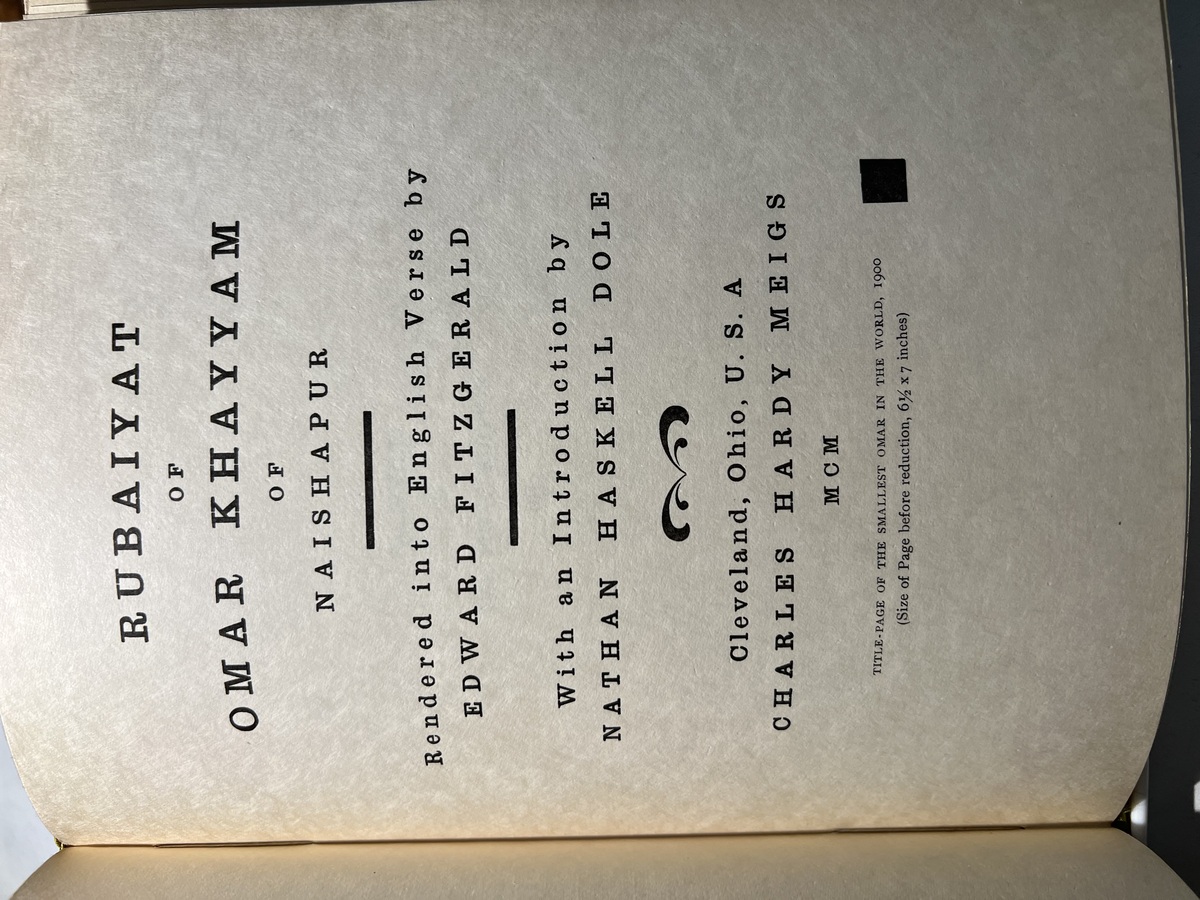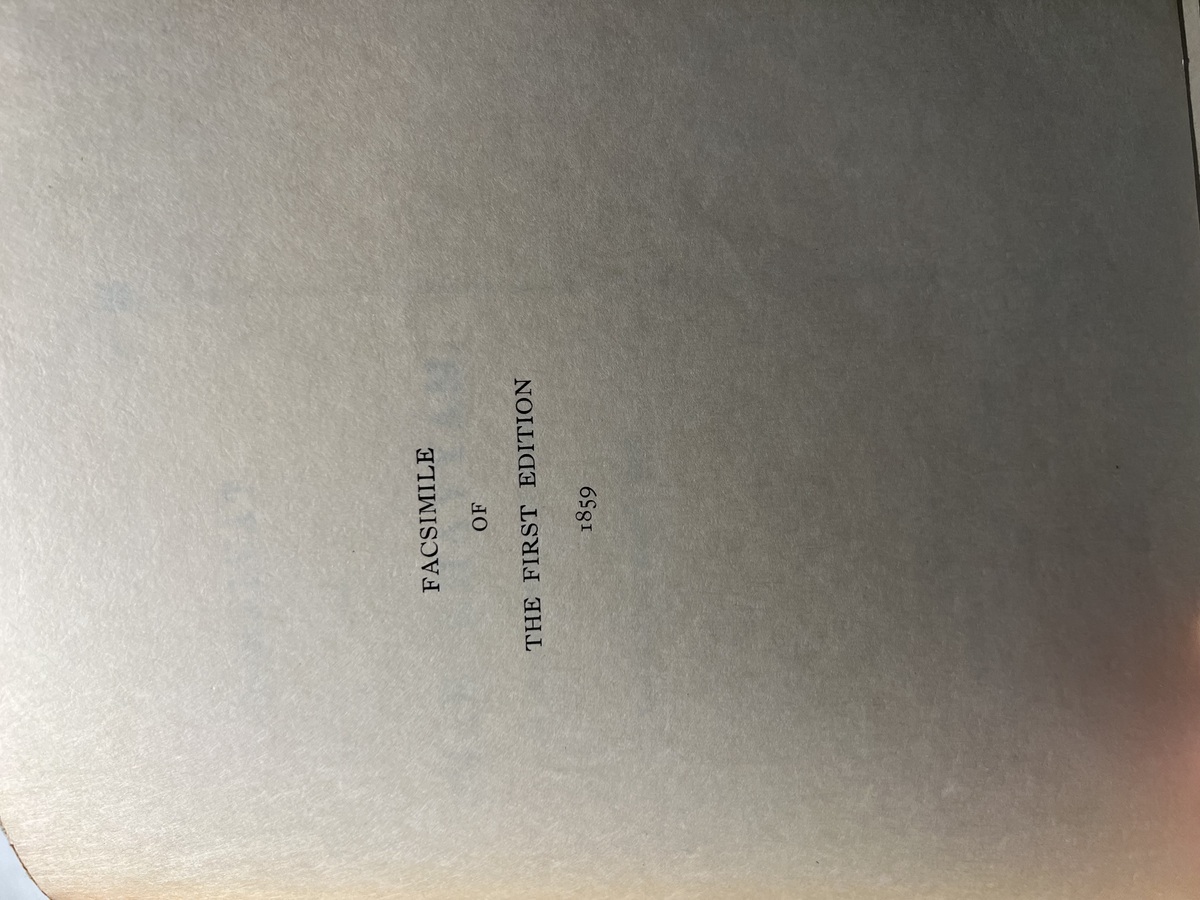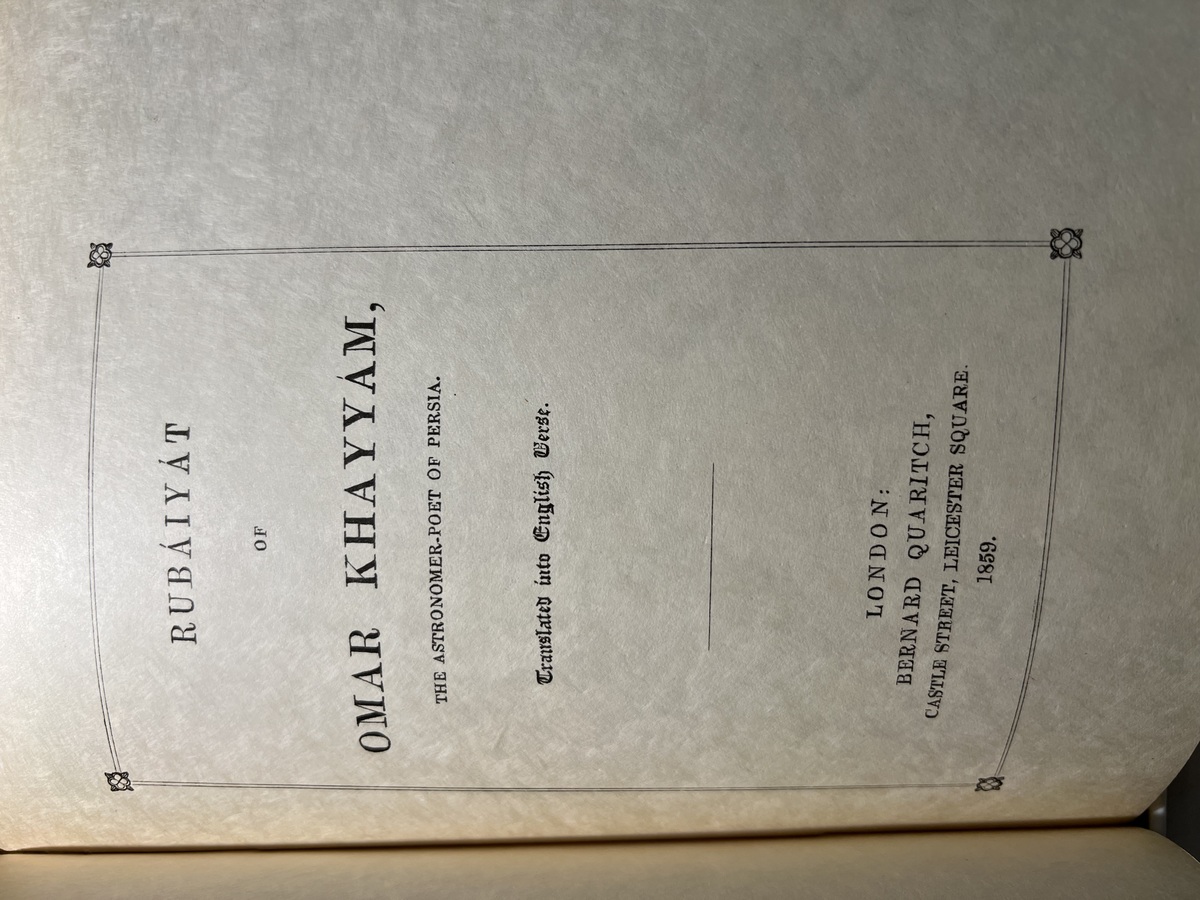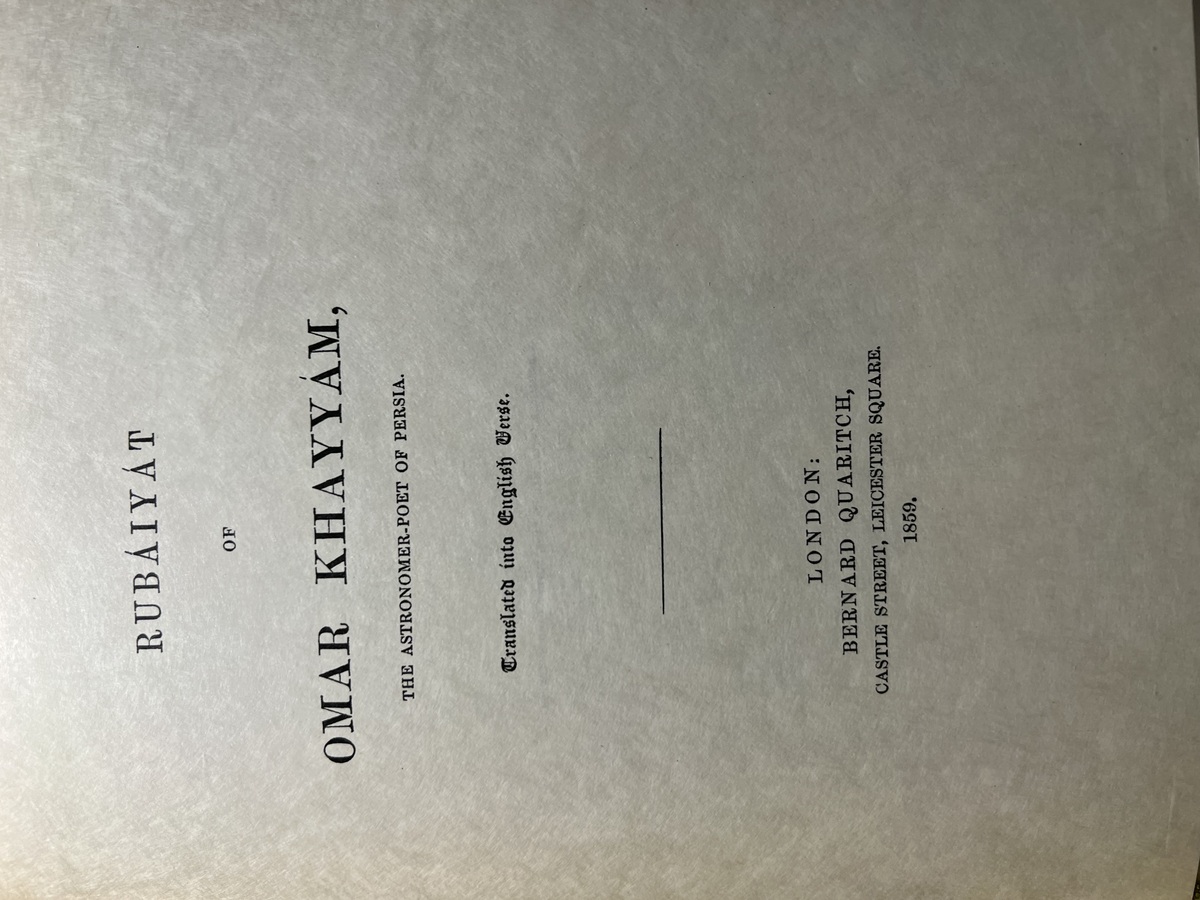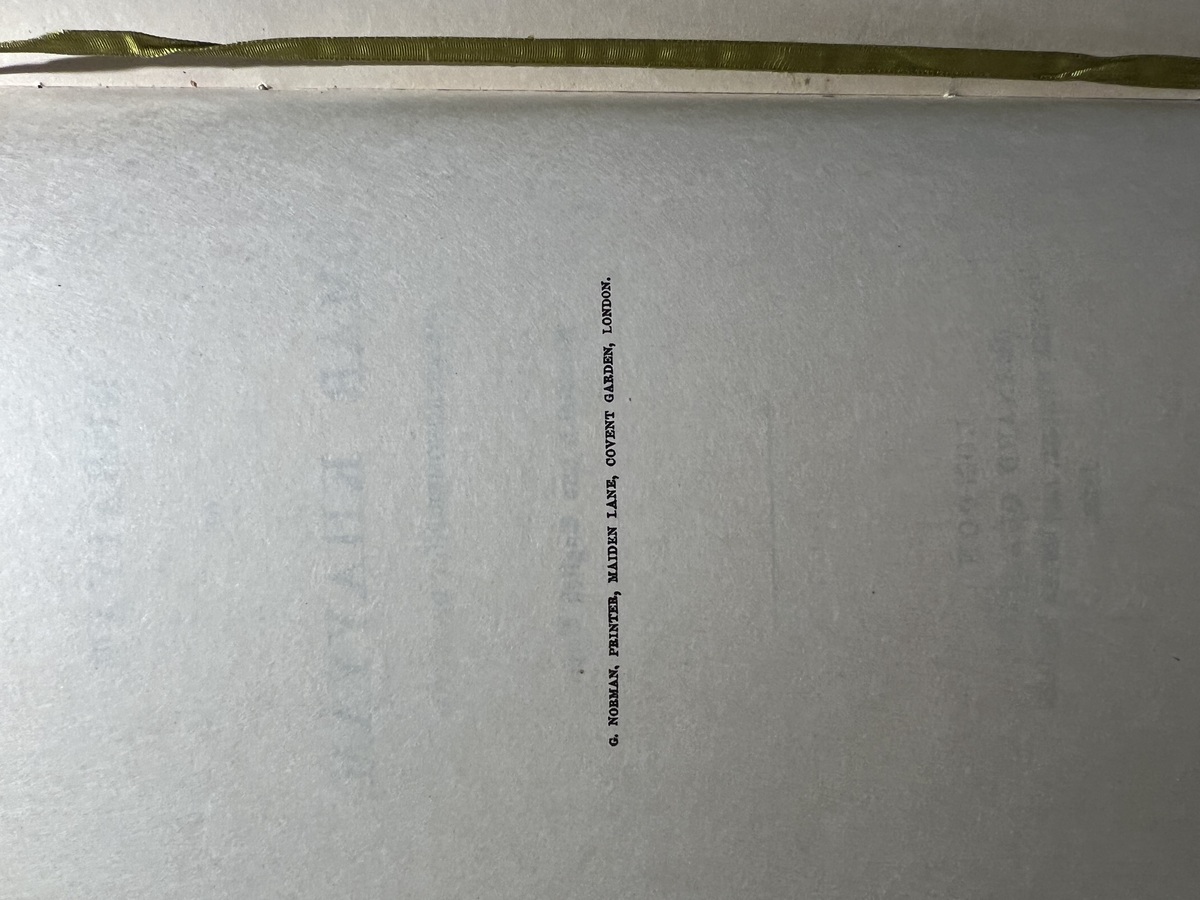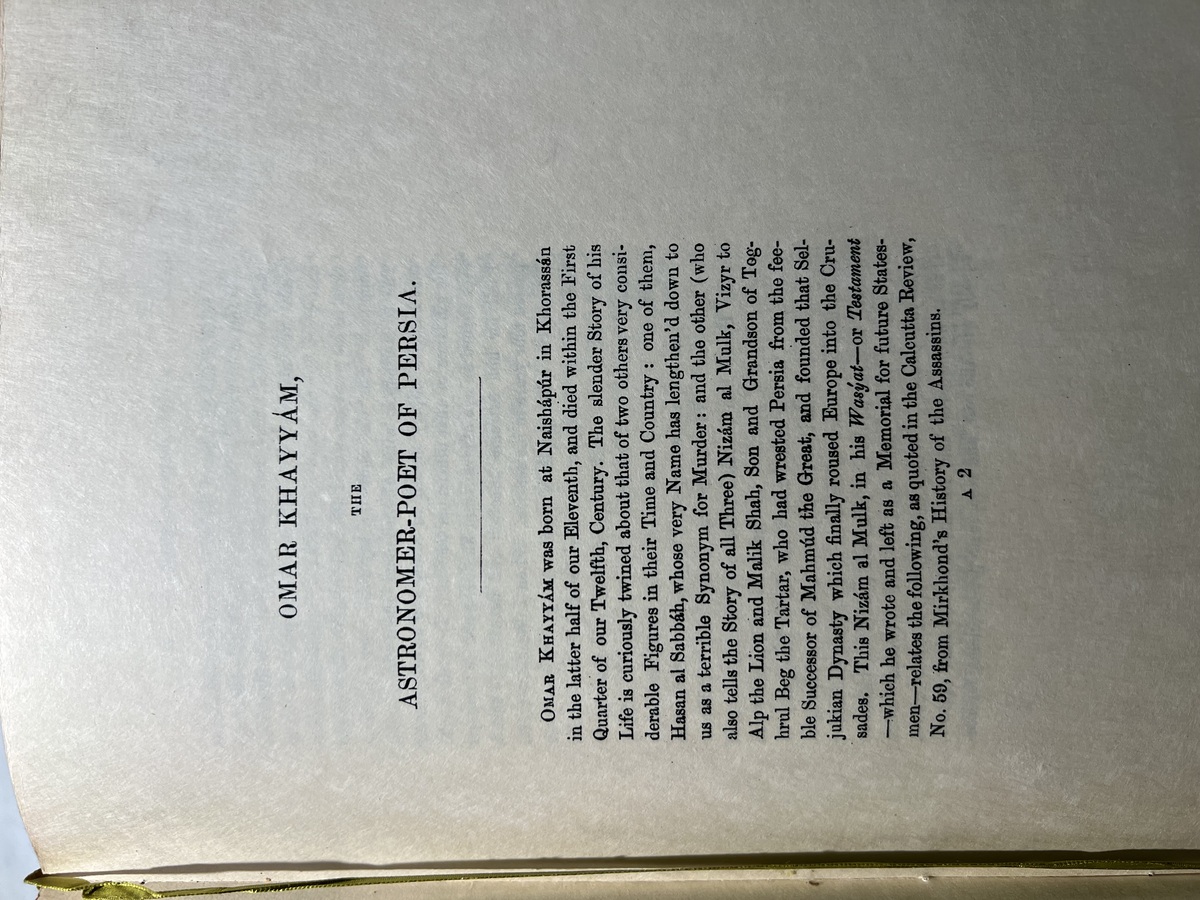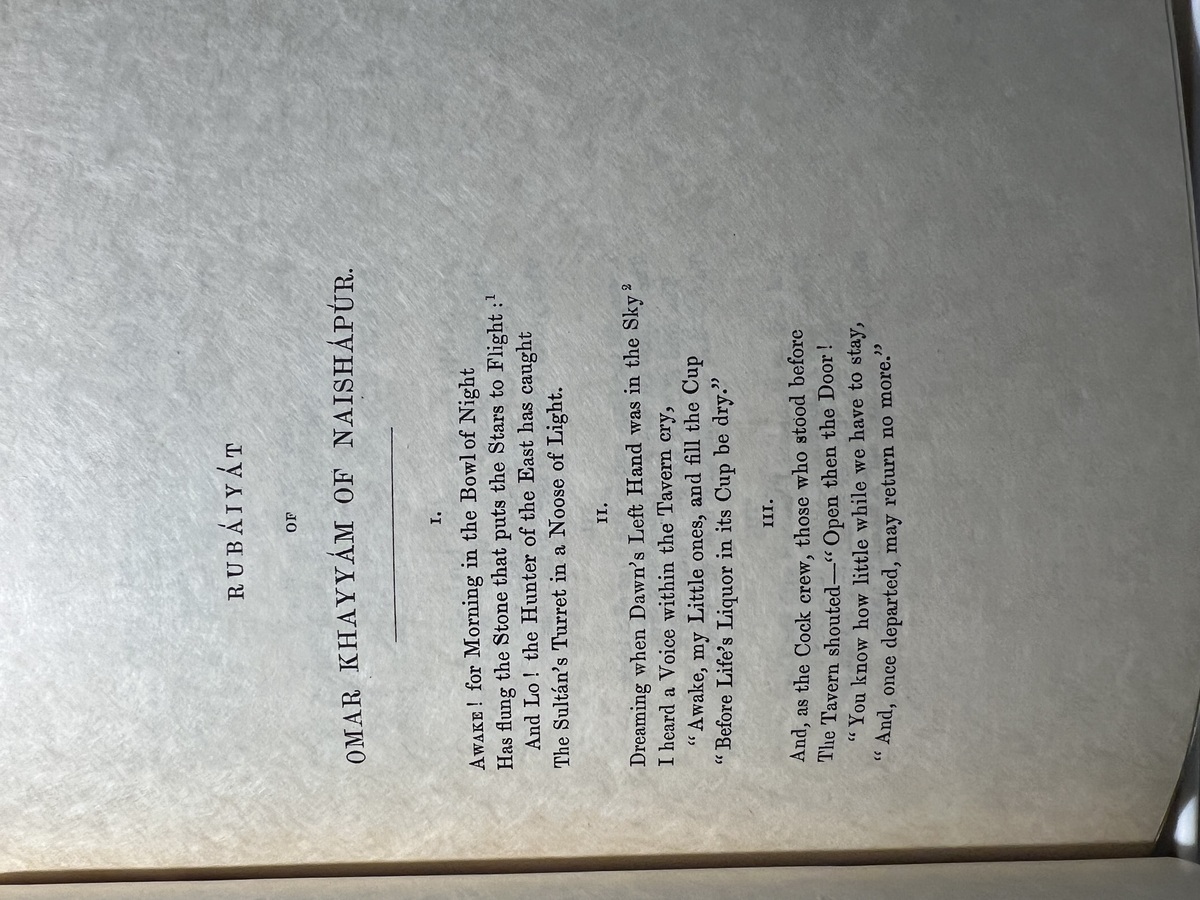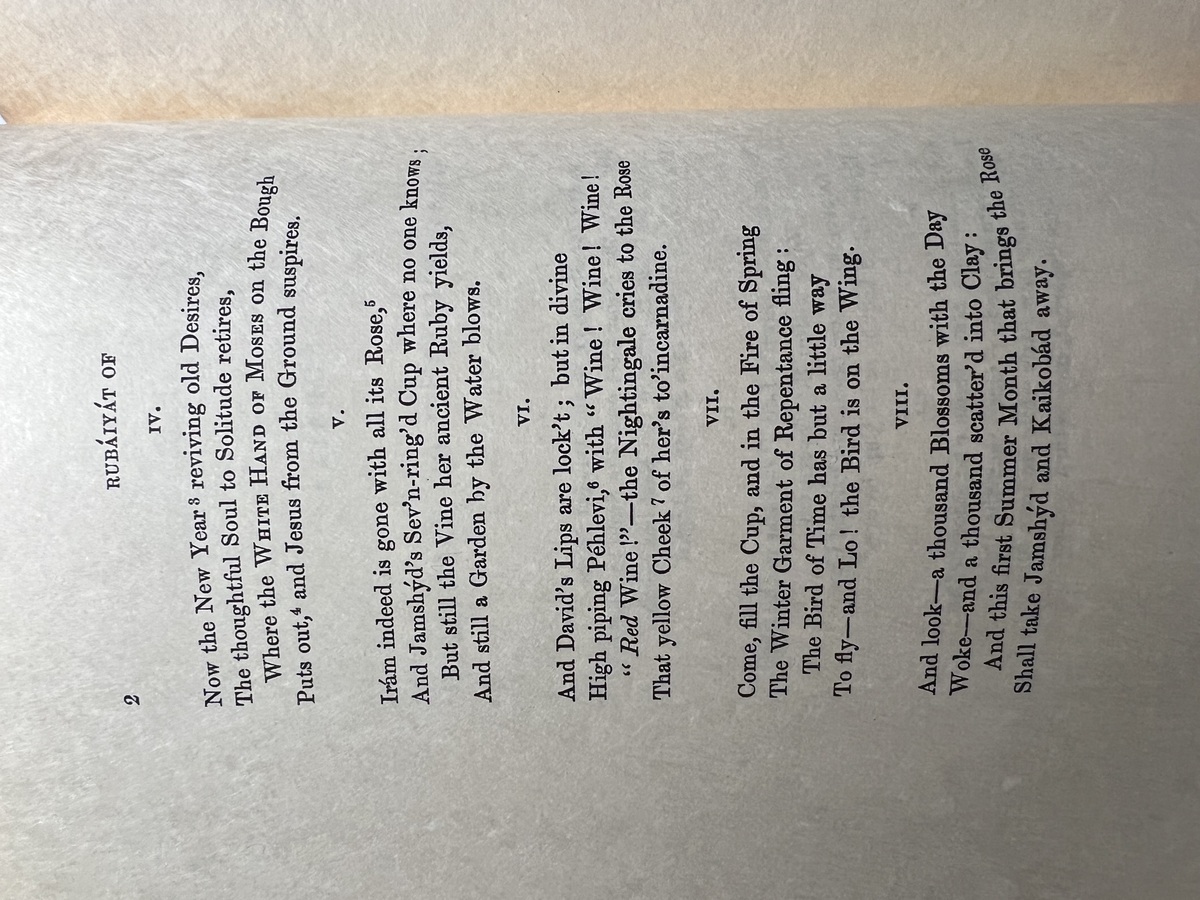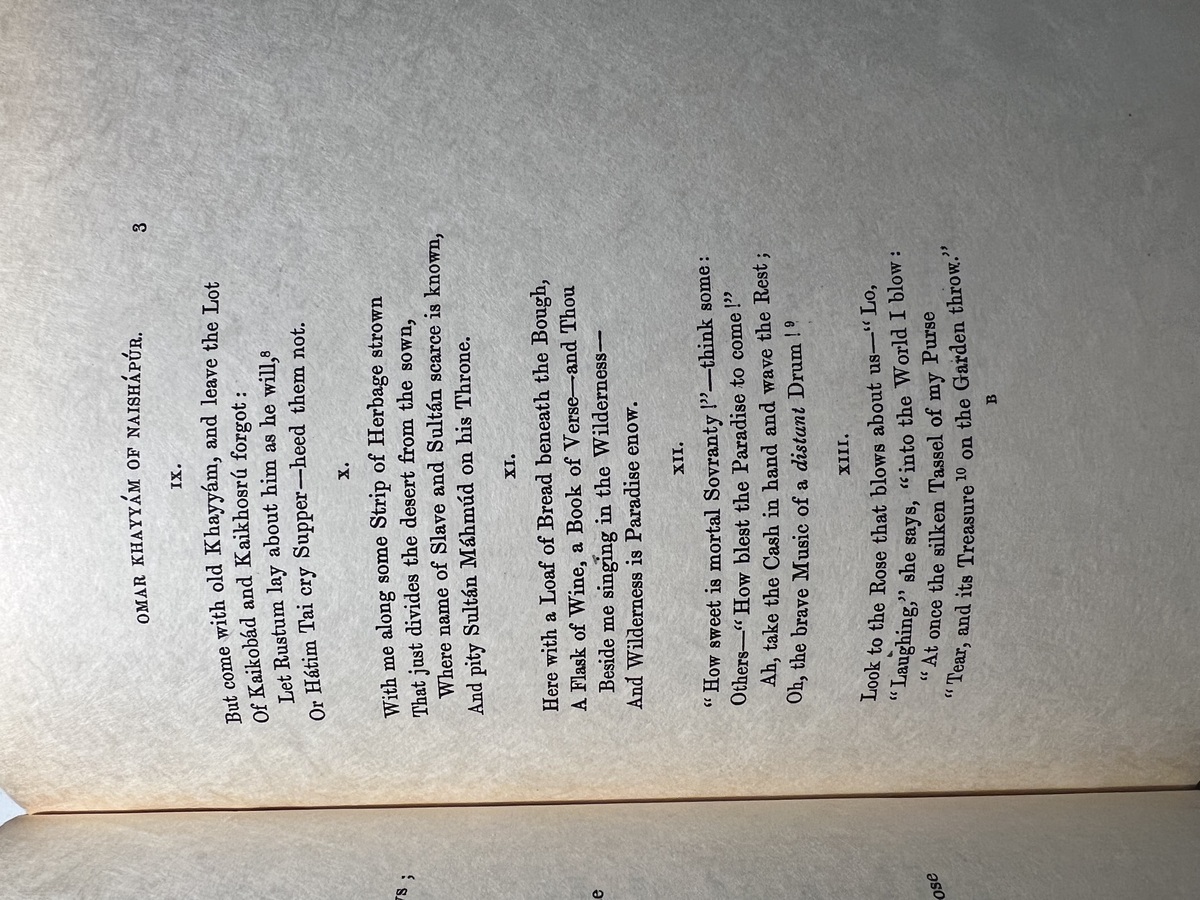The Rubaiyat of Omar Khayyam:
1902 Thomas B. Mosher Bernard Quaritch 1859 Facsimile 1/40 Edition
This edition is fantastic for a collector such as myself. Printer for/published by Thomas B. Mosher in 1902, it is effectively a ‘copy’ of the first printed Rubaiyat edition by Bernard Quaritch in 1859. “Reproduced by photo-lithographic process in exact facsimile” it says (which is fascinating and amazing). It has the first edition’s interior, along with facsimiles of the initial editions’ title pages. Not only that, it has descriptions of those editions.
The introduction of this unique edition is just too good for me to just include a sample, so I have the entire introduction photographed here. I feel kinship to Mosher in how he described his endeavors in this edition and I thank him and his colleagues for compiling this edition and publishing it.
One of my favorite parts of the introduction:
“World-classic that the Rubaiyat has become, it can never be reprinted too often, though some of its admirers render scant justice to the eternal verities of book-making. Those who would see what the original was like in its utter lack of adornment may now behold it in our reproduction of the modest brown-wrappered pamphlet of forty-three years ago. It will live, reclad even in its old simple attire, perhaps the nearer to one’s heart because in such “beggarly disguise “ it more fully represents the spirit of him who bequeathed, once and forever, great verse unto a little clan.”
“It can never be reprinted too often” - if that were not true, this site would not exist!
This edition is really a dream come true as it’s akin to having one of the originals. Definitely a highlight of my collection.
The Book Itself
This edition has only 40 copies. My copy is No. 3 and it is signed by Thomas B. Mosher himself. It is printed on Japanese vellum. It comes in a box and the cover is wrapped with a paper jacket.
The Poetry
History/Information Sourcing
You may notice that the Roman Numerals for the year are not standard and don’t ‘convert’ with a tool such as this. It’s the same Roman Numeral quirk that I discovered in this 1910 T.N. Foulis Maurice Greiffenhagen Miniature Edition. DCCCC is equivalent to CM, basically.
The intro poem is from “Sister Songs by Francis Thompson”. I just searched the text to determine this.


